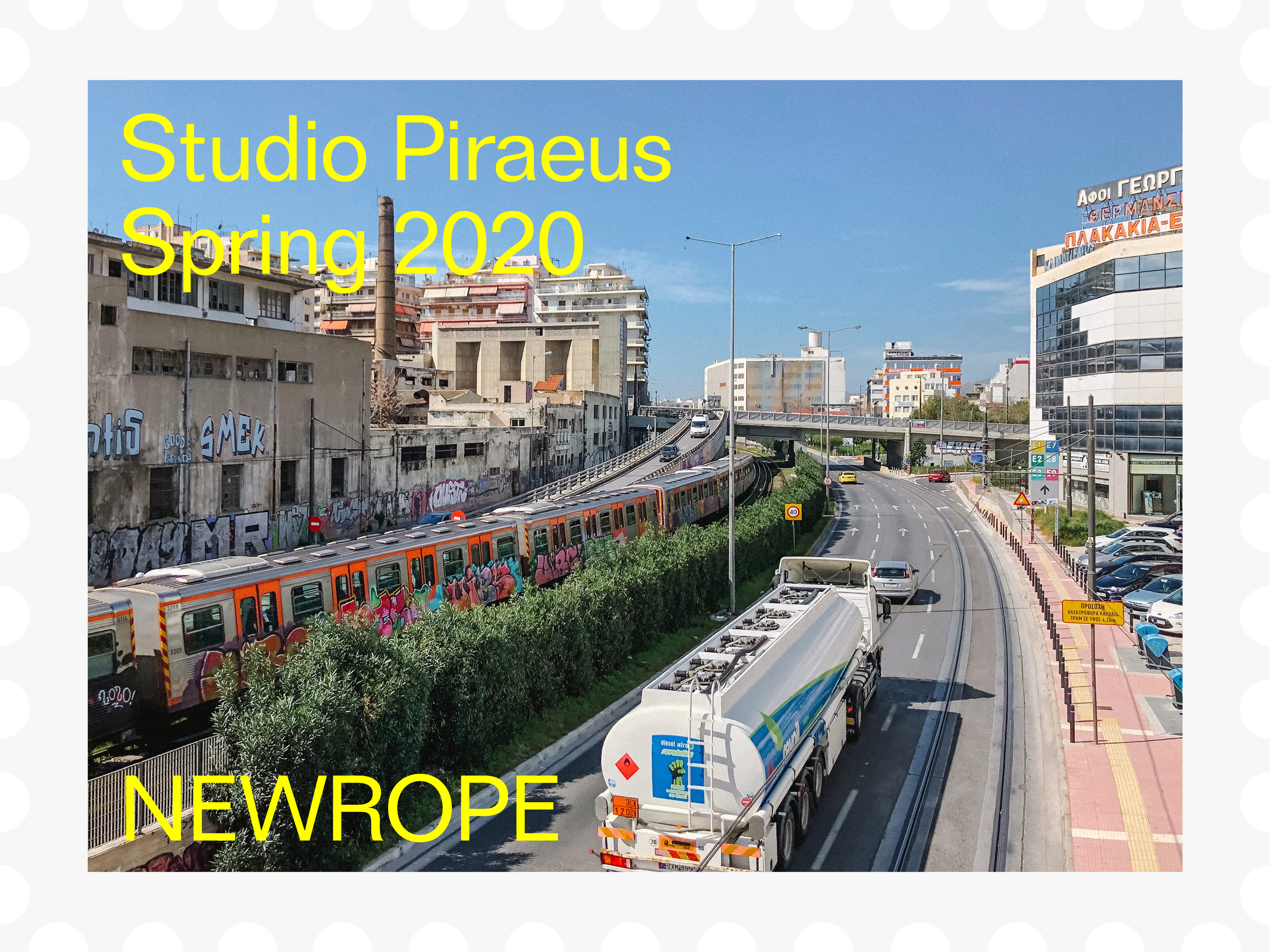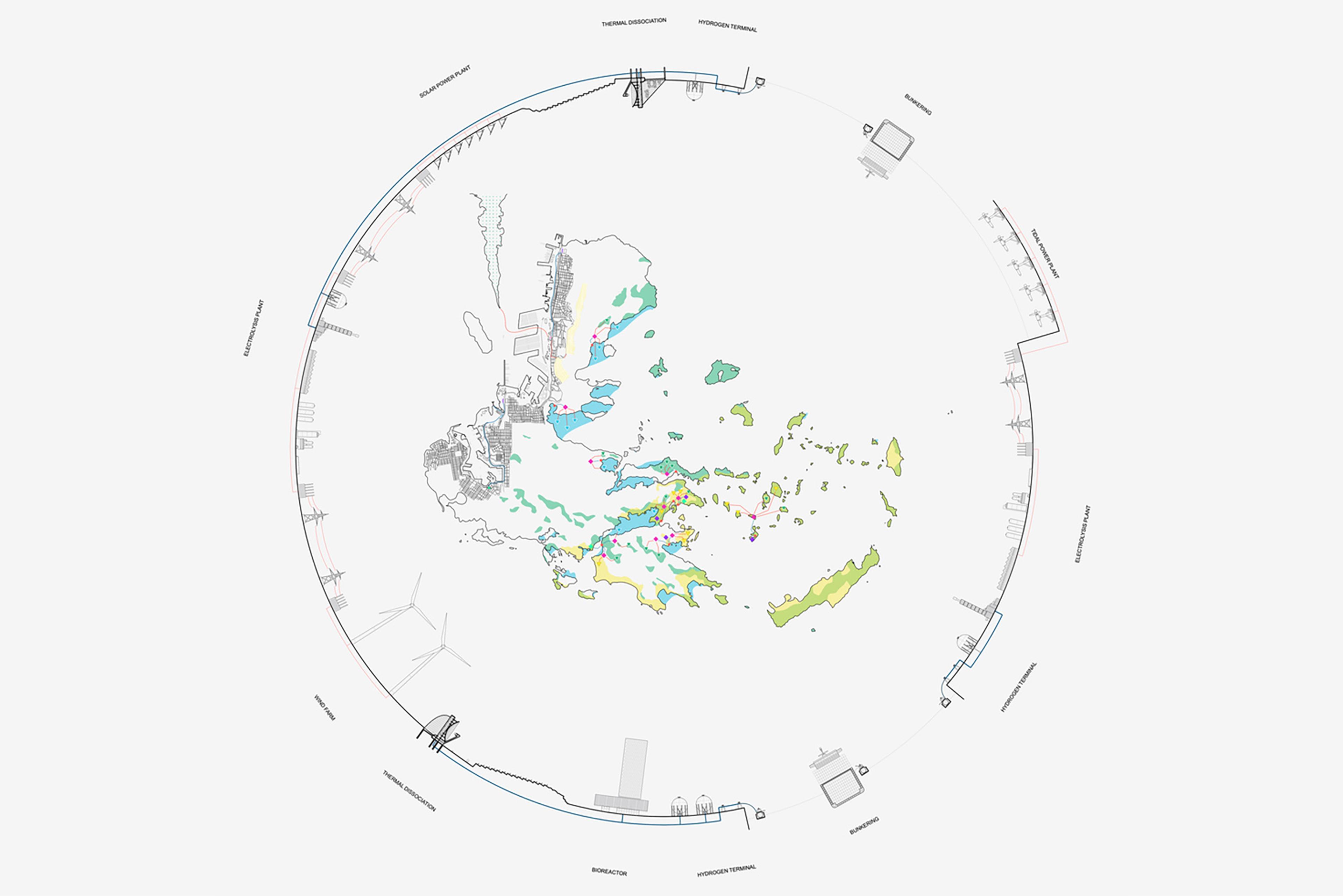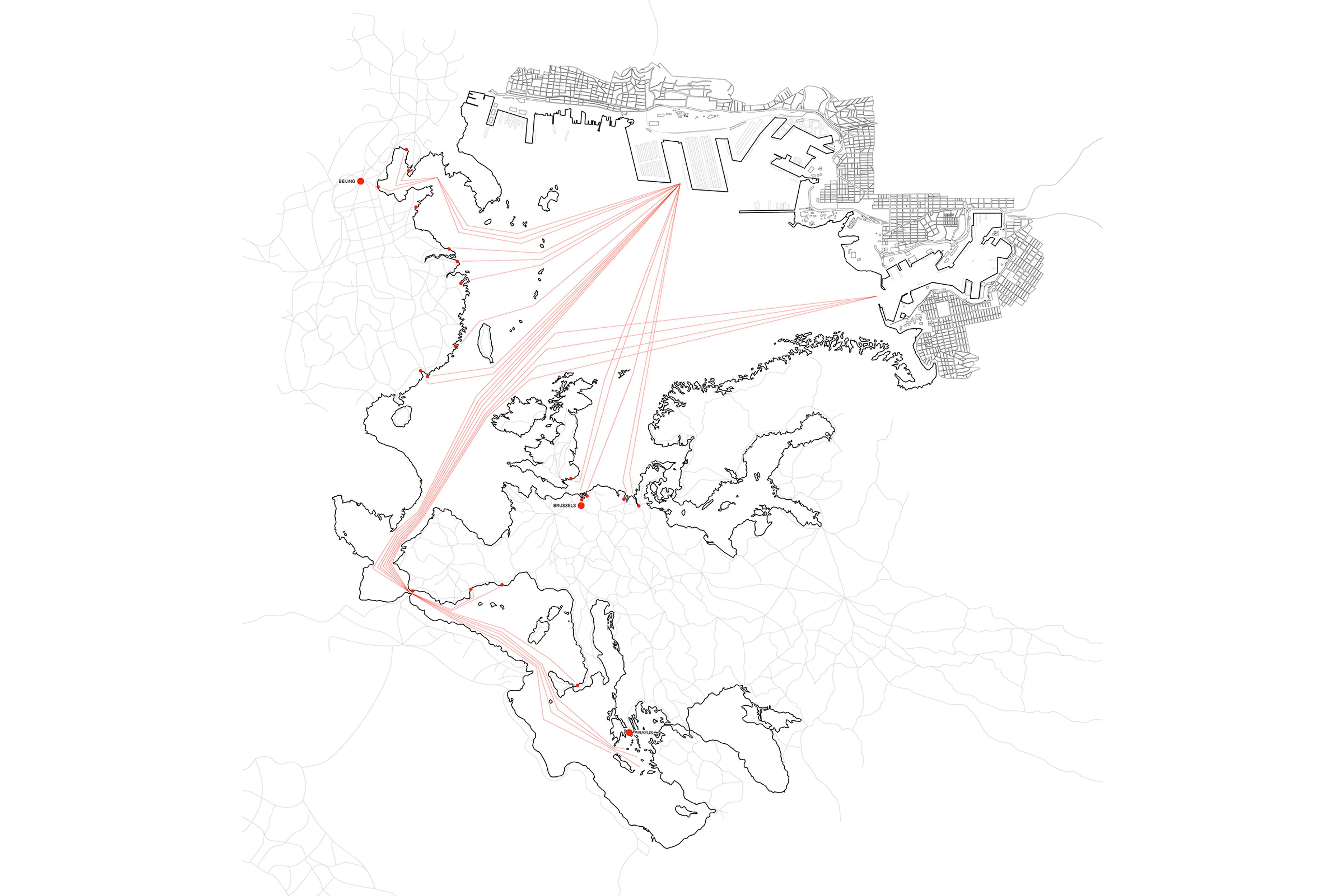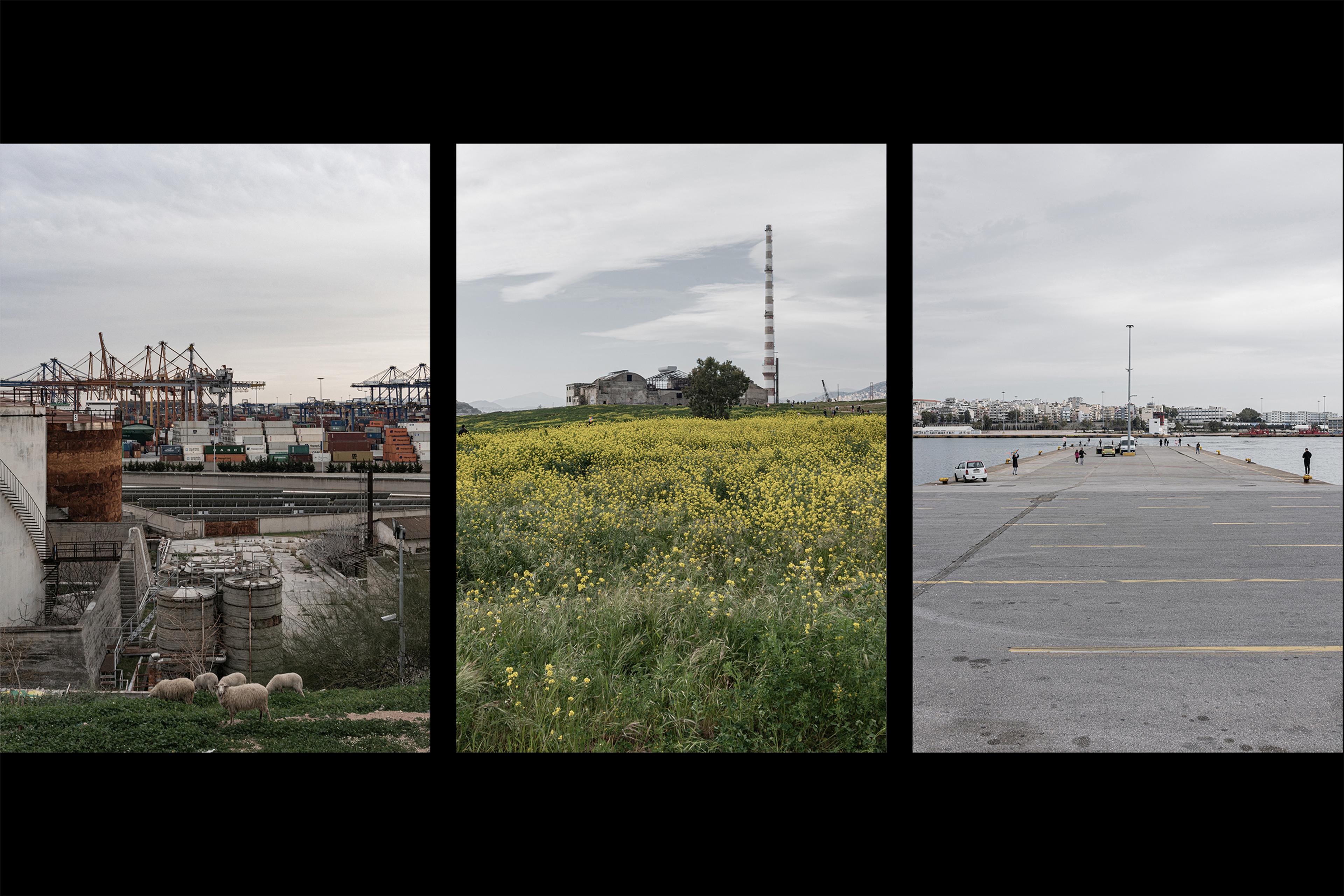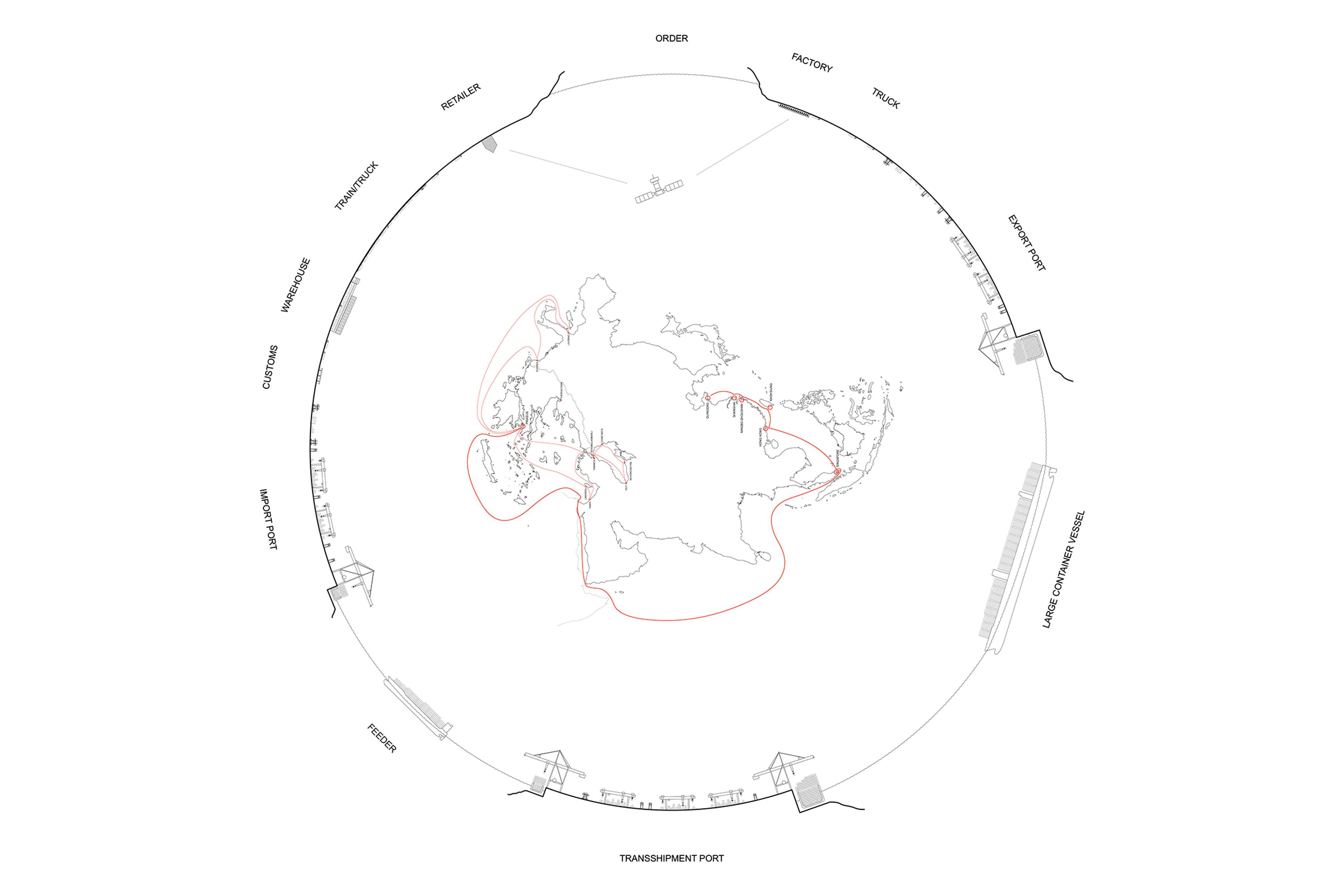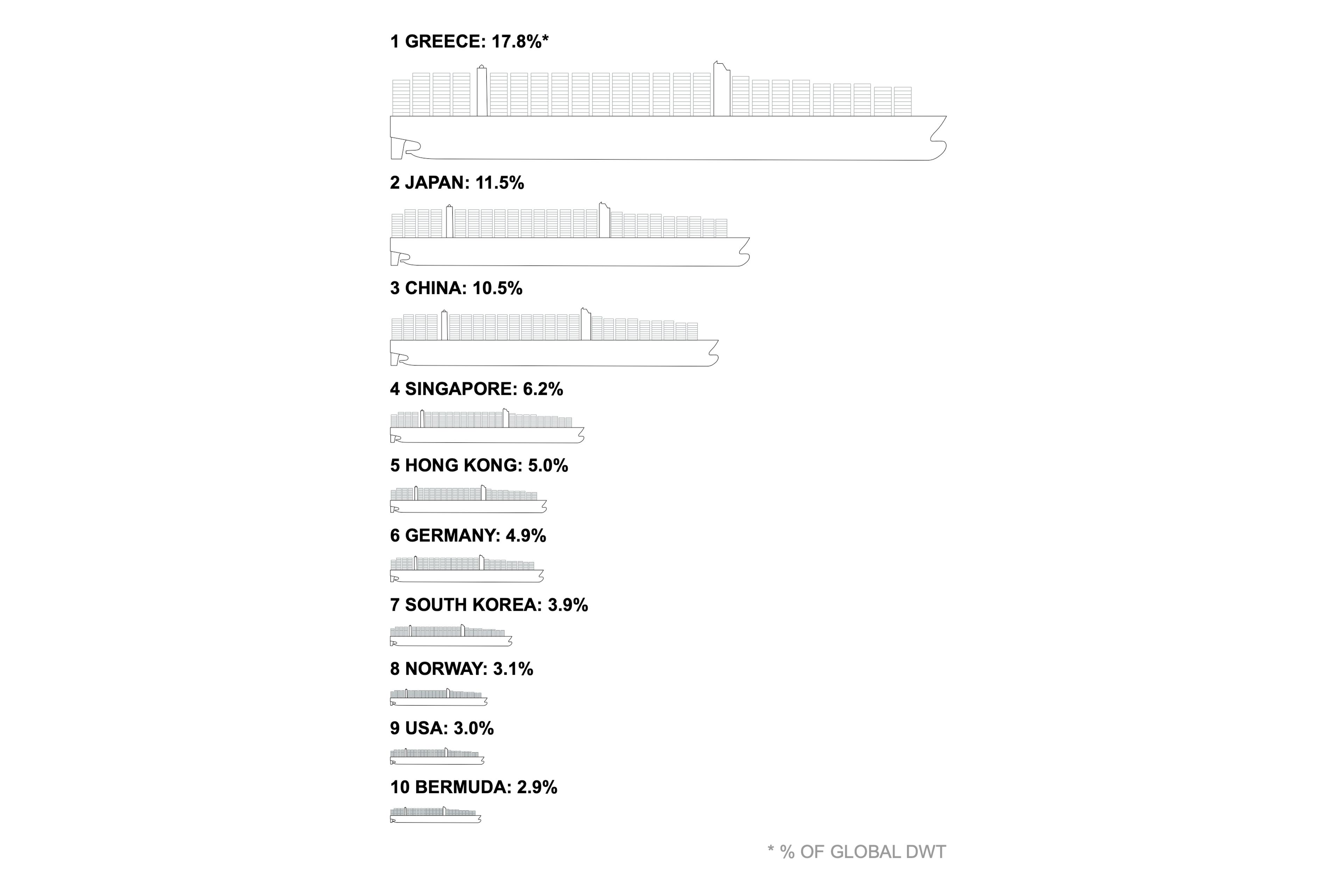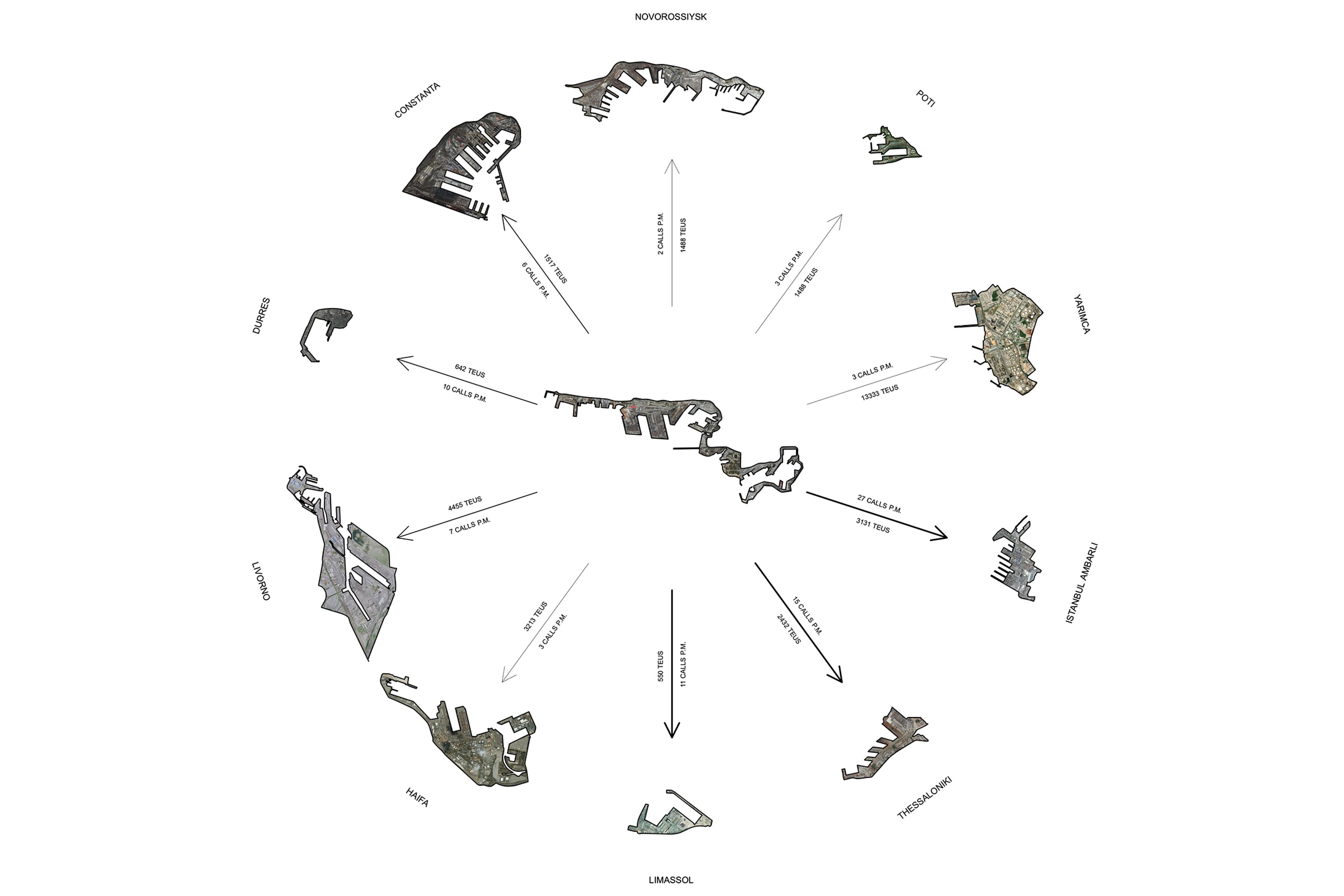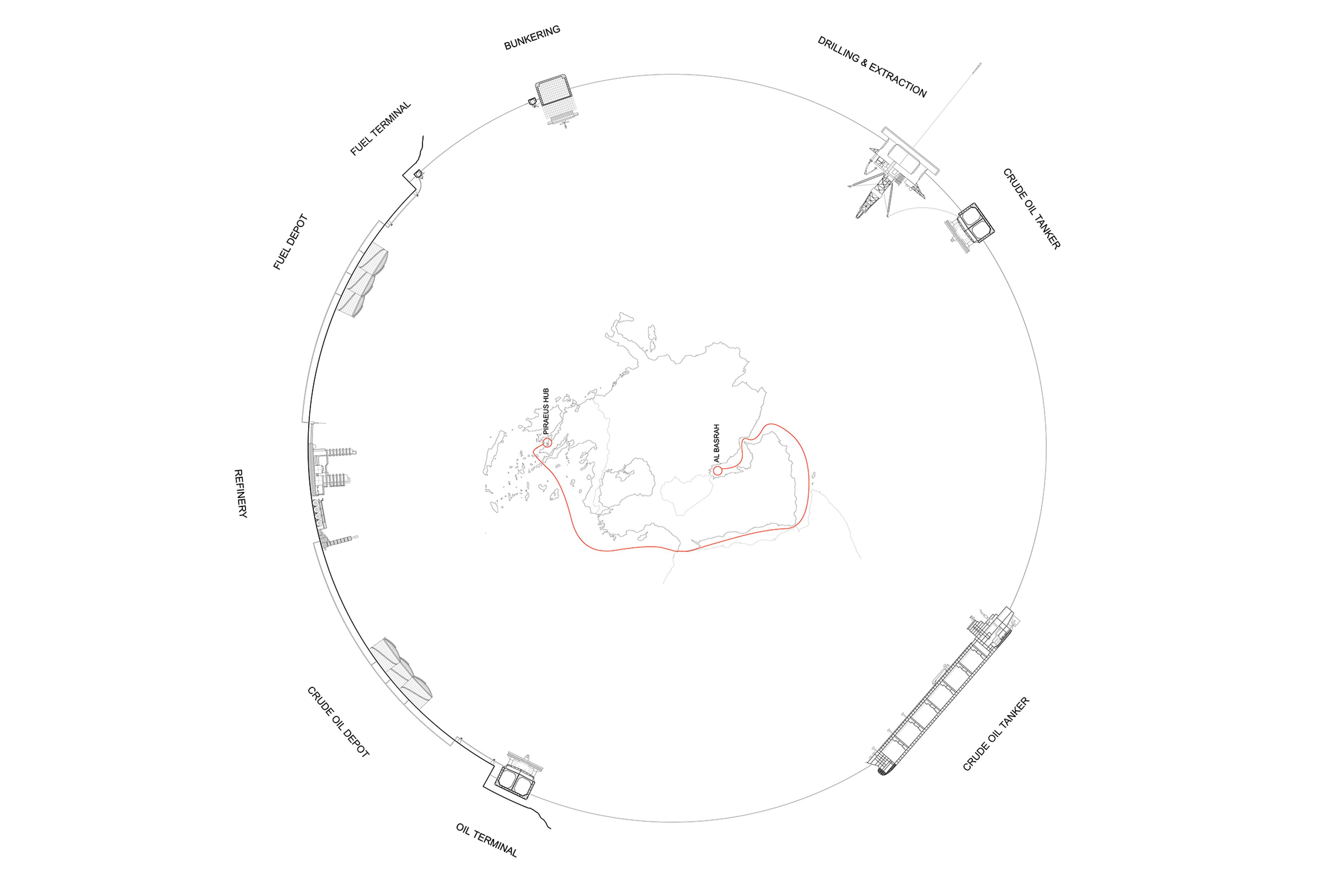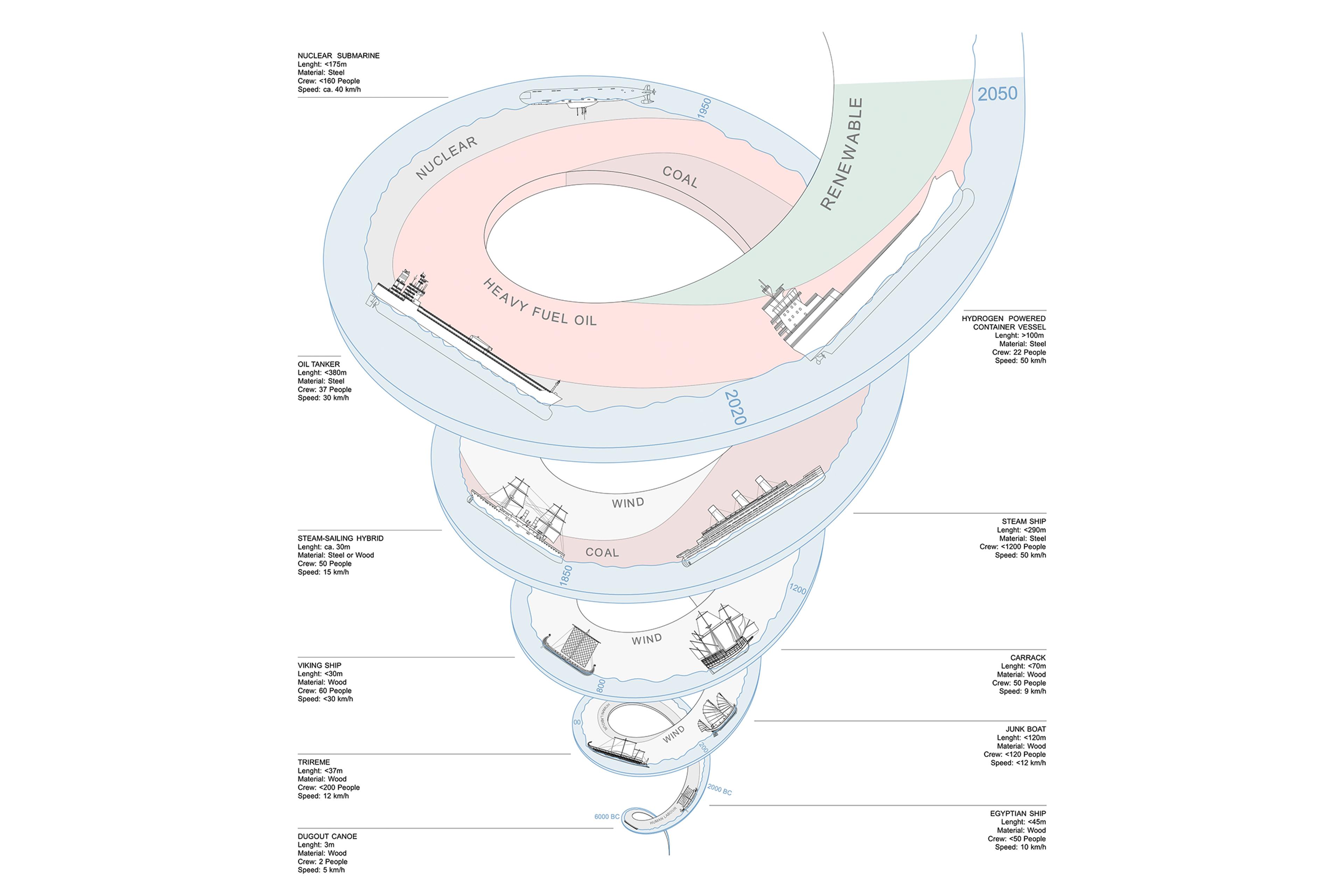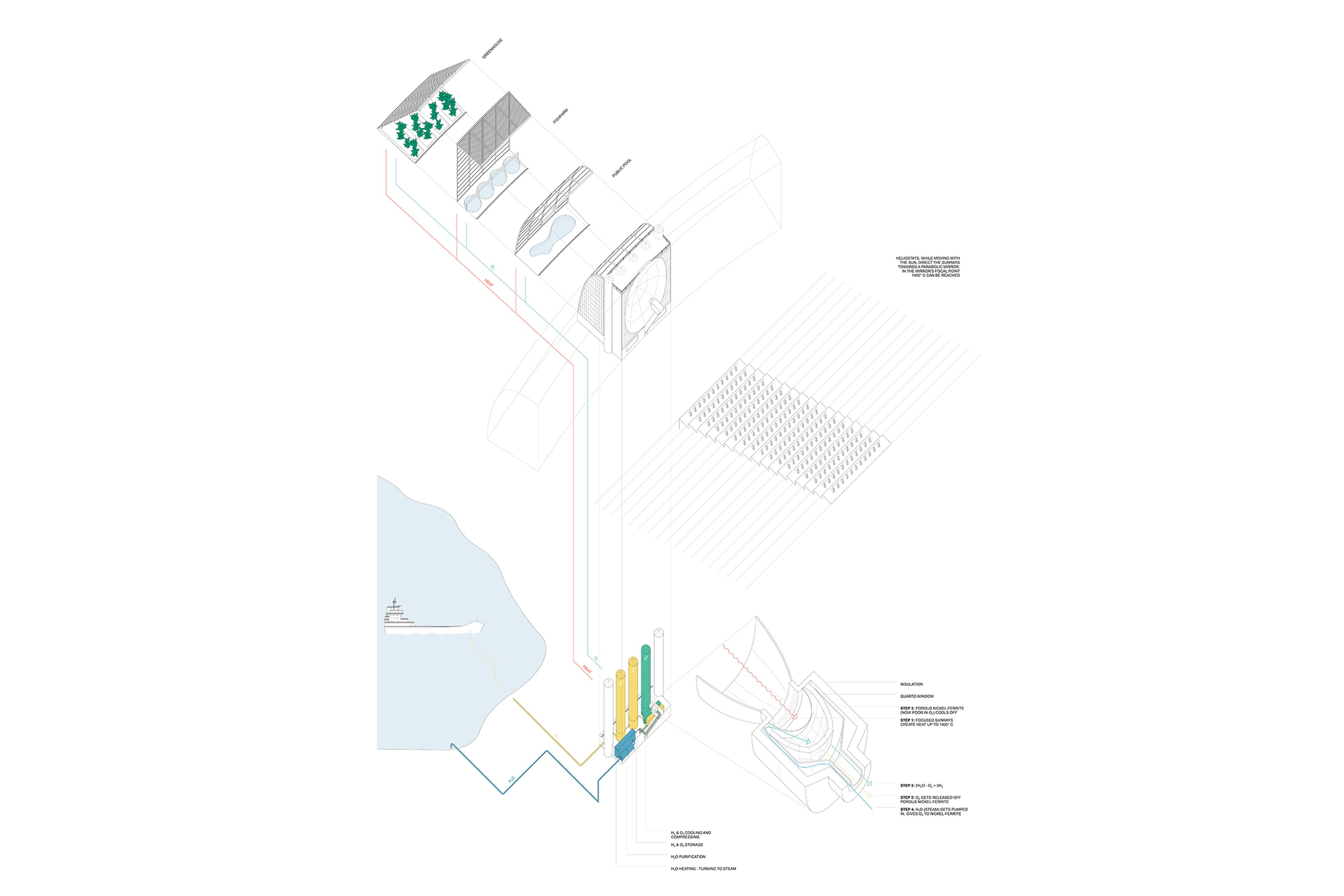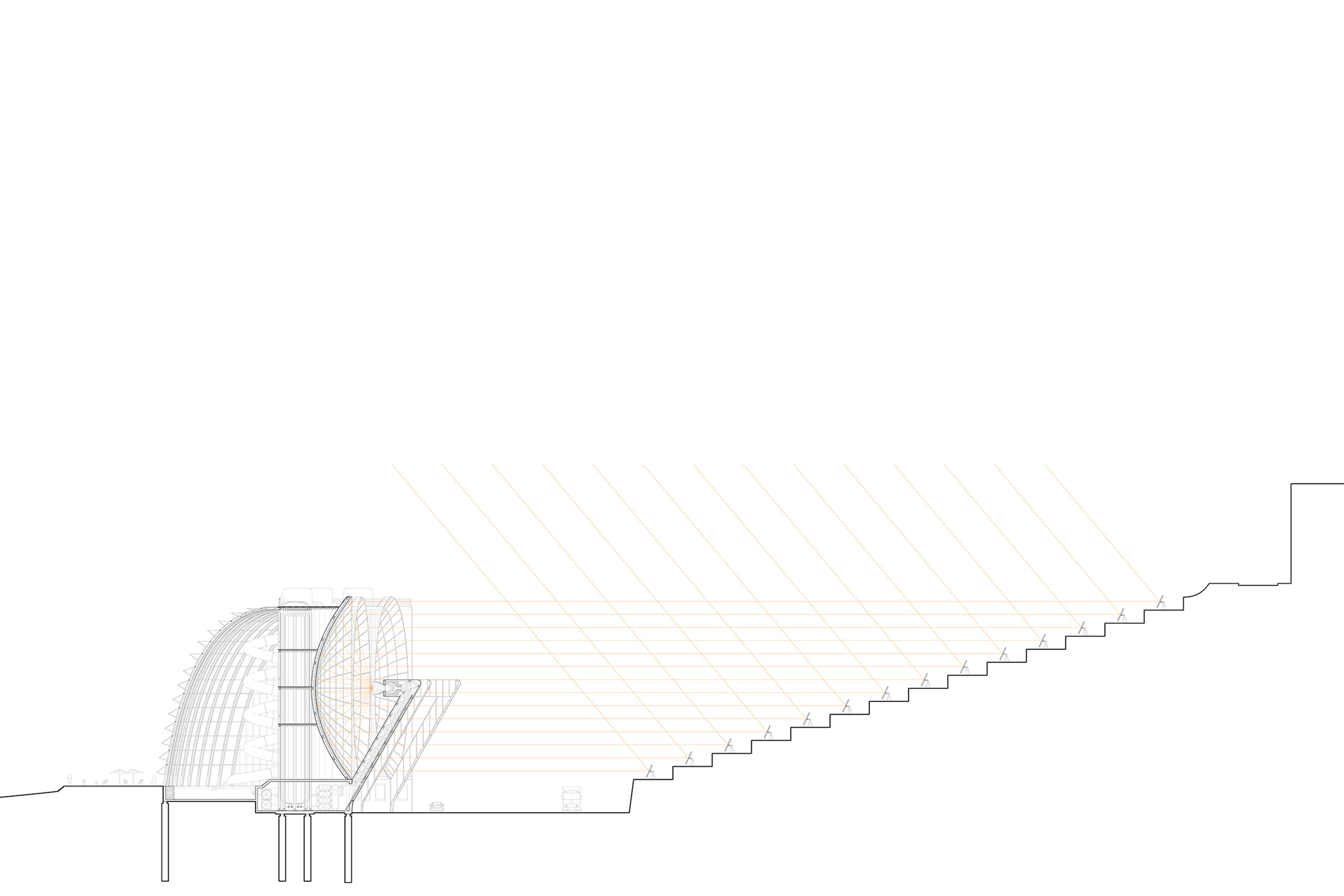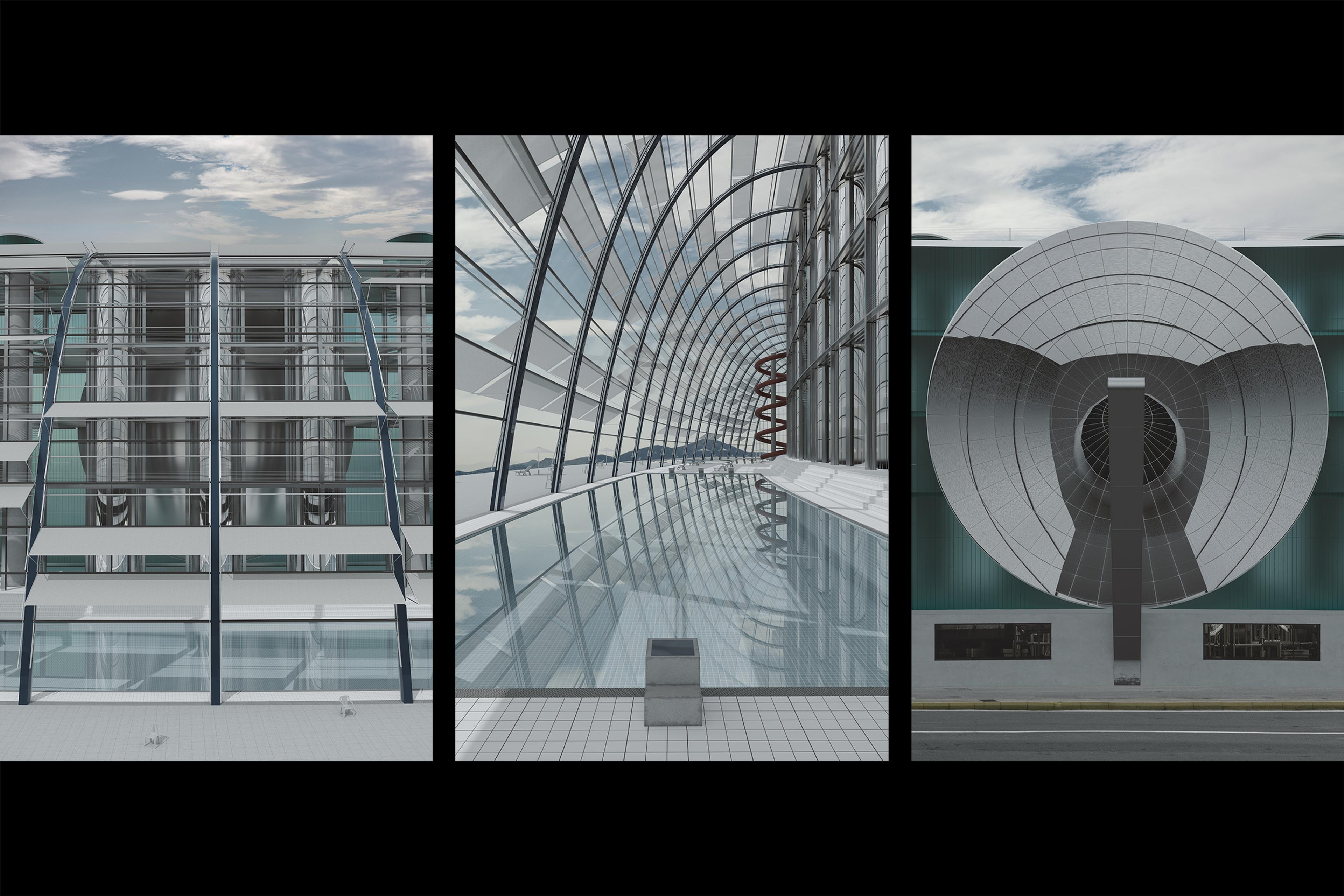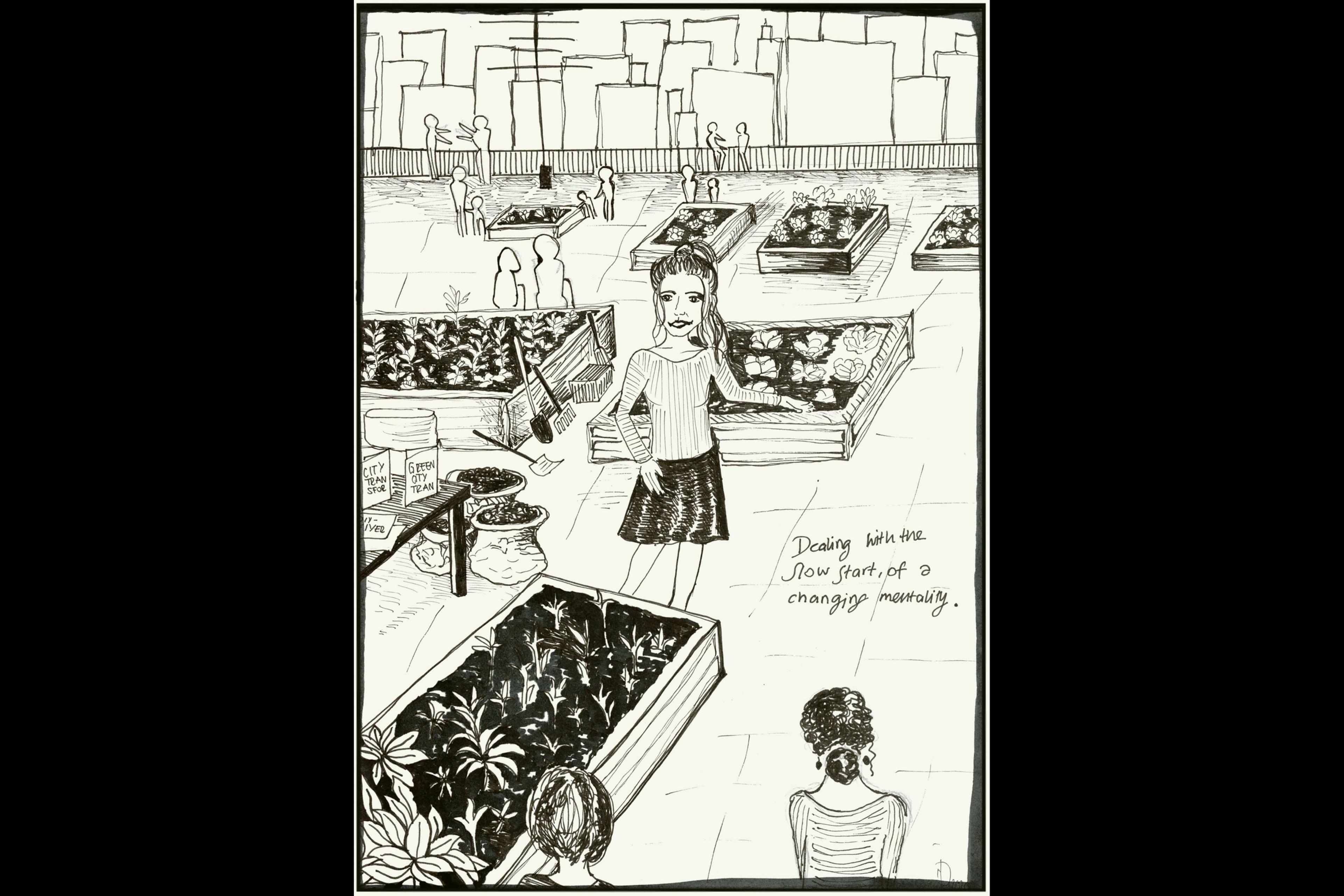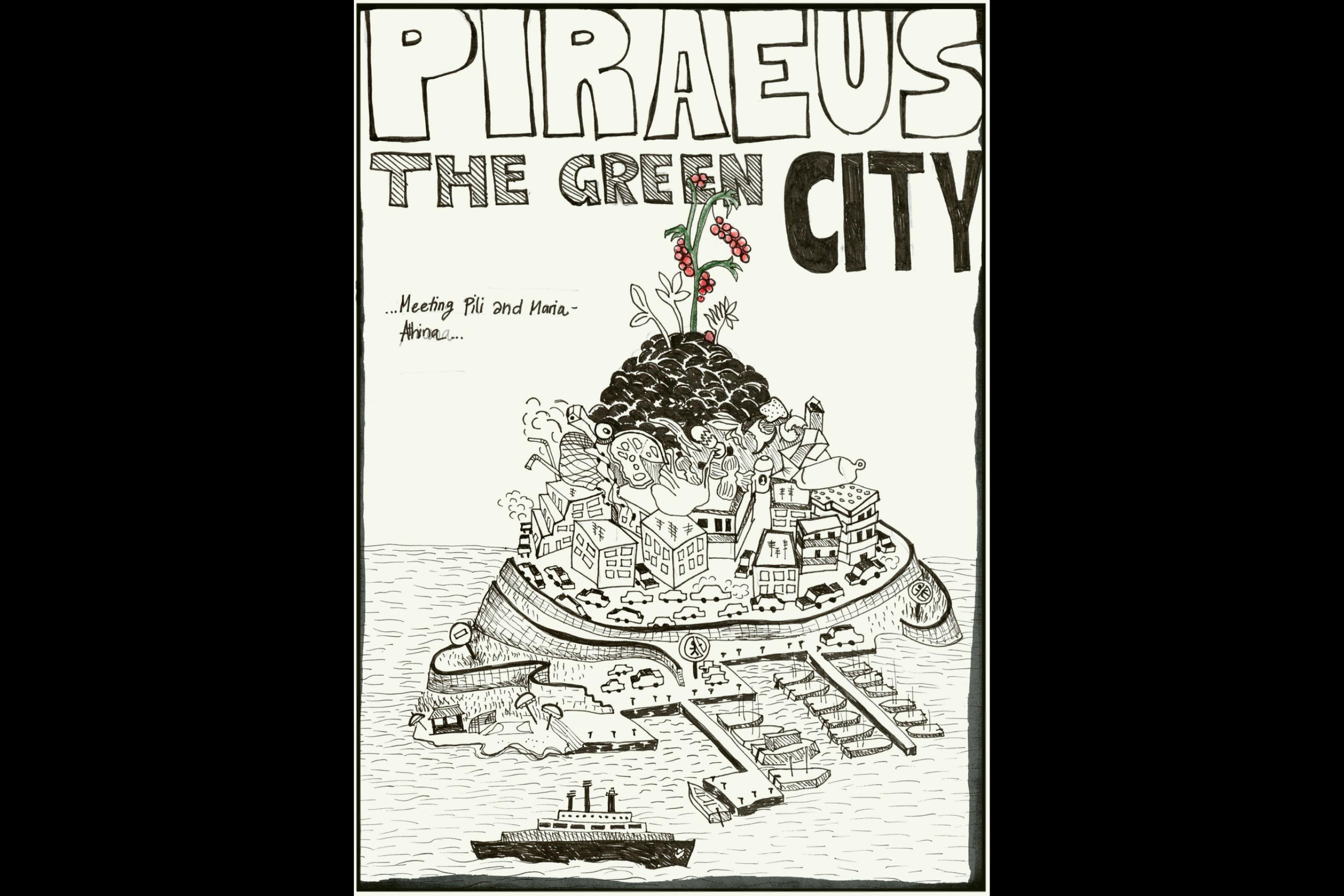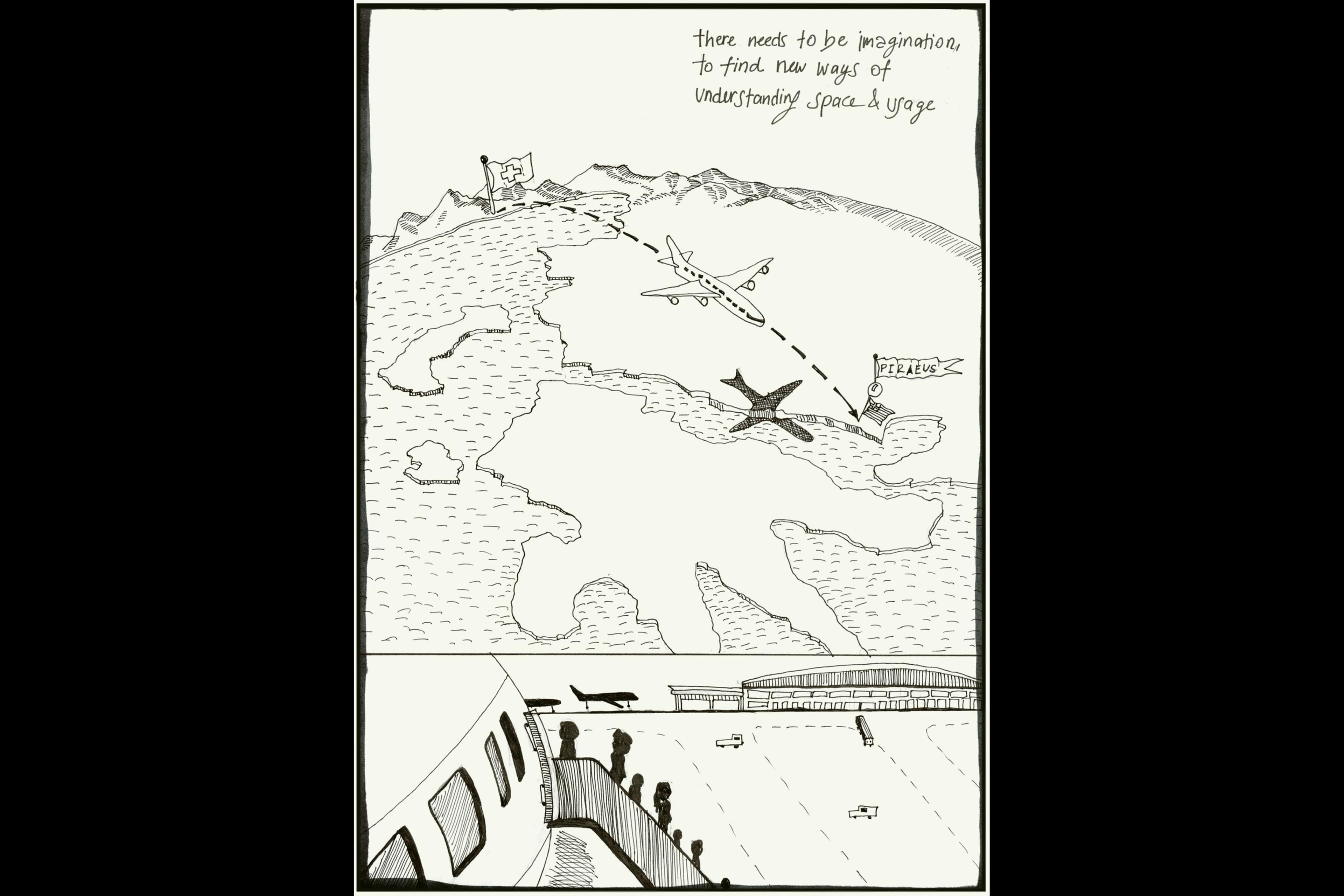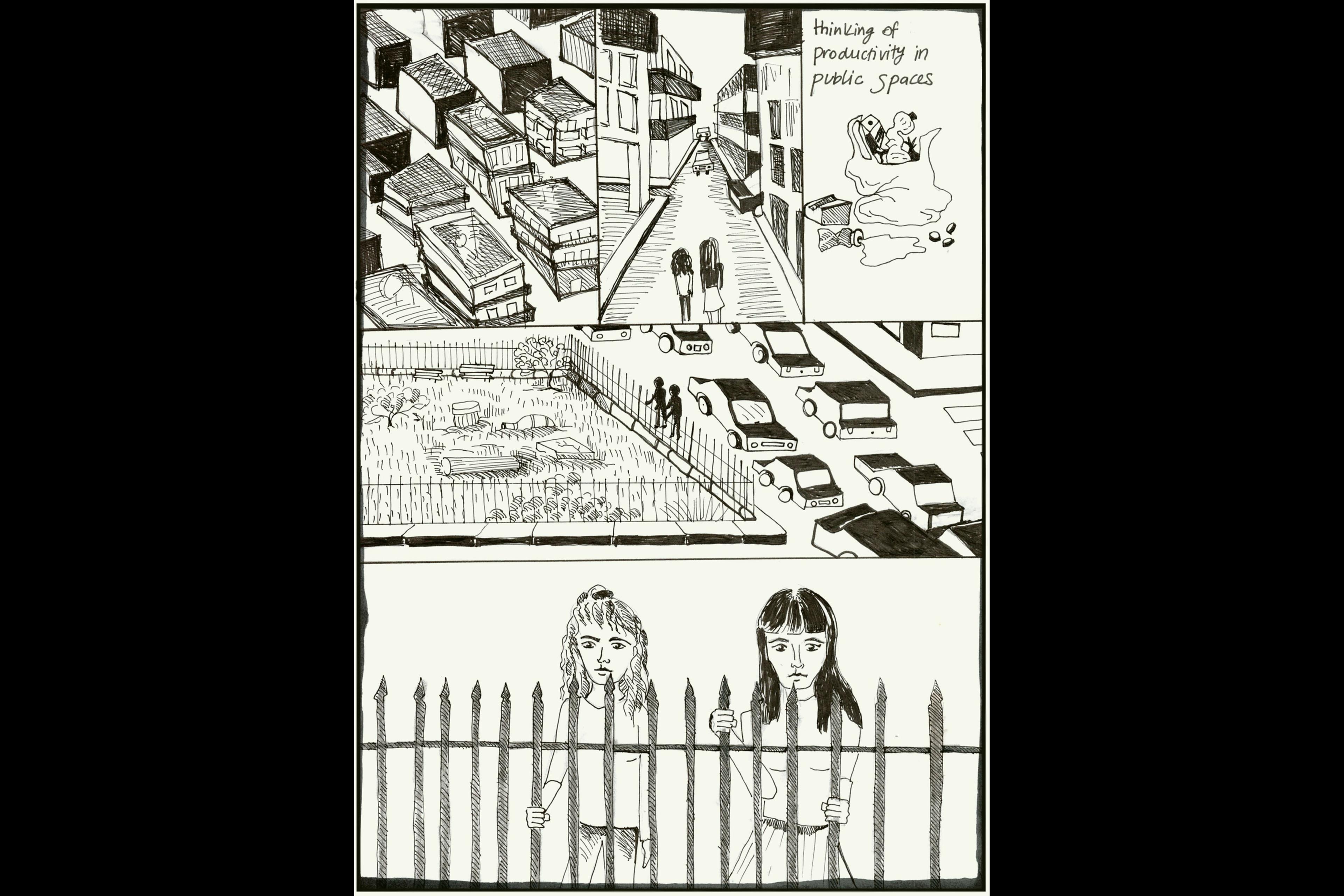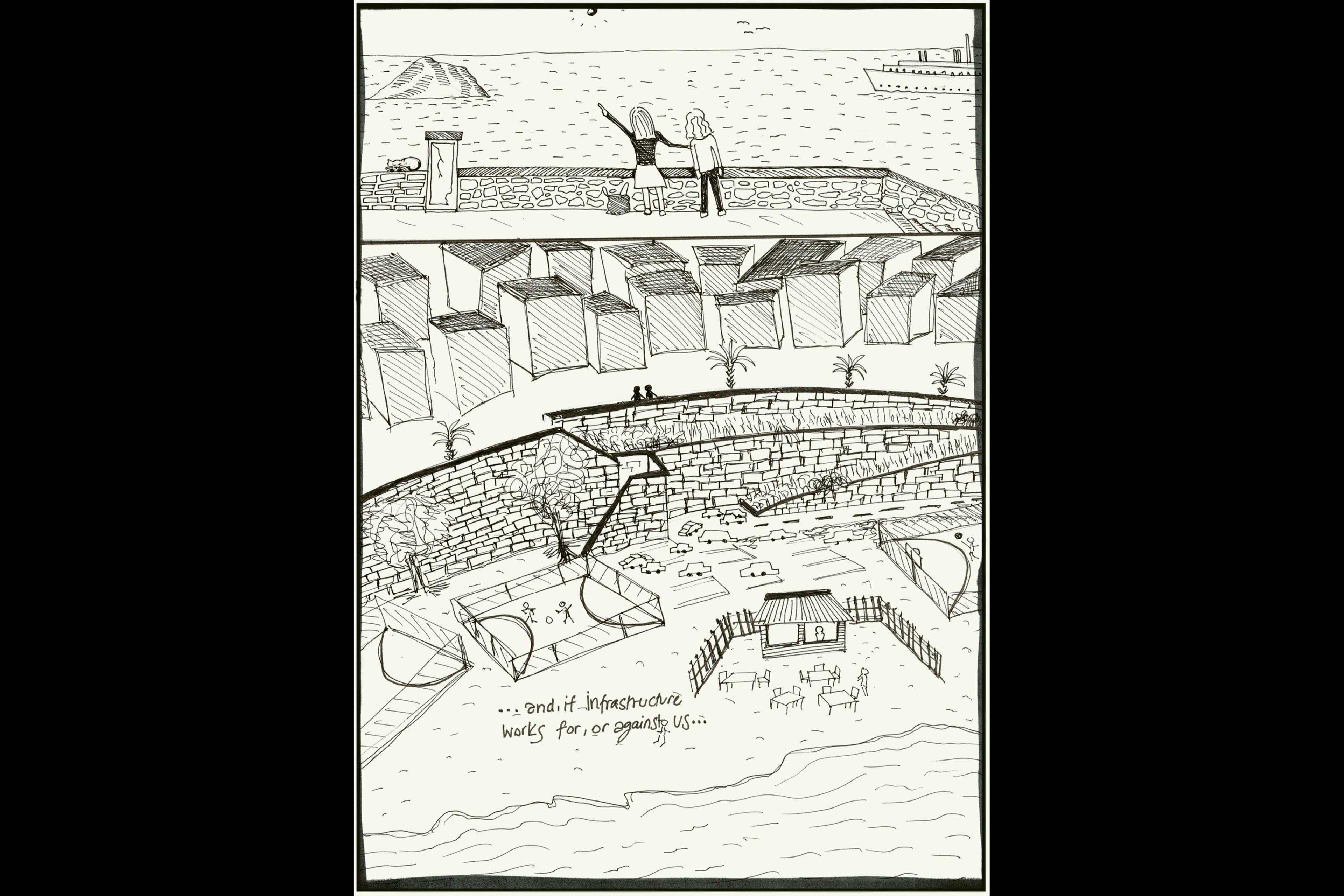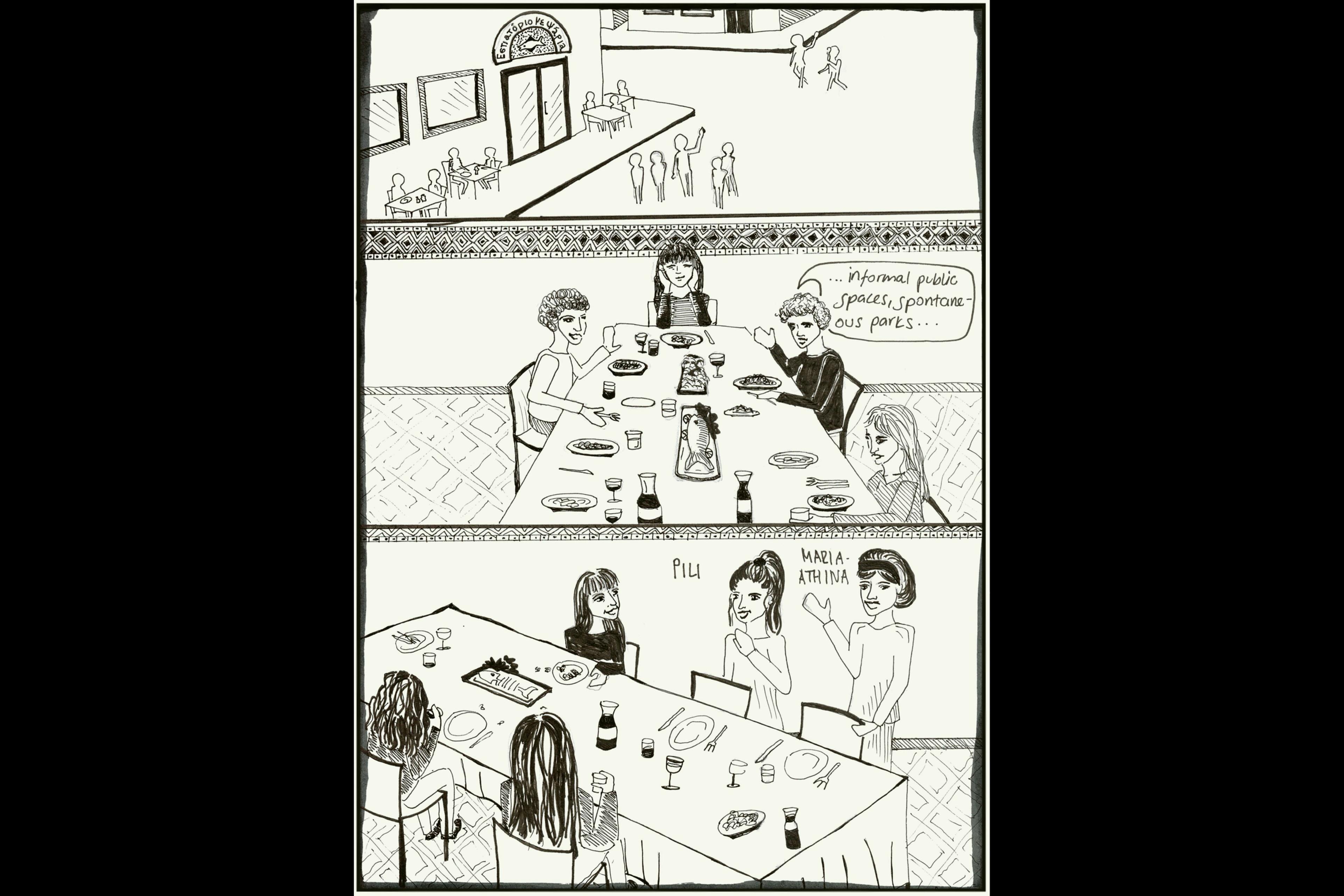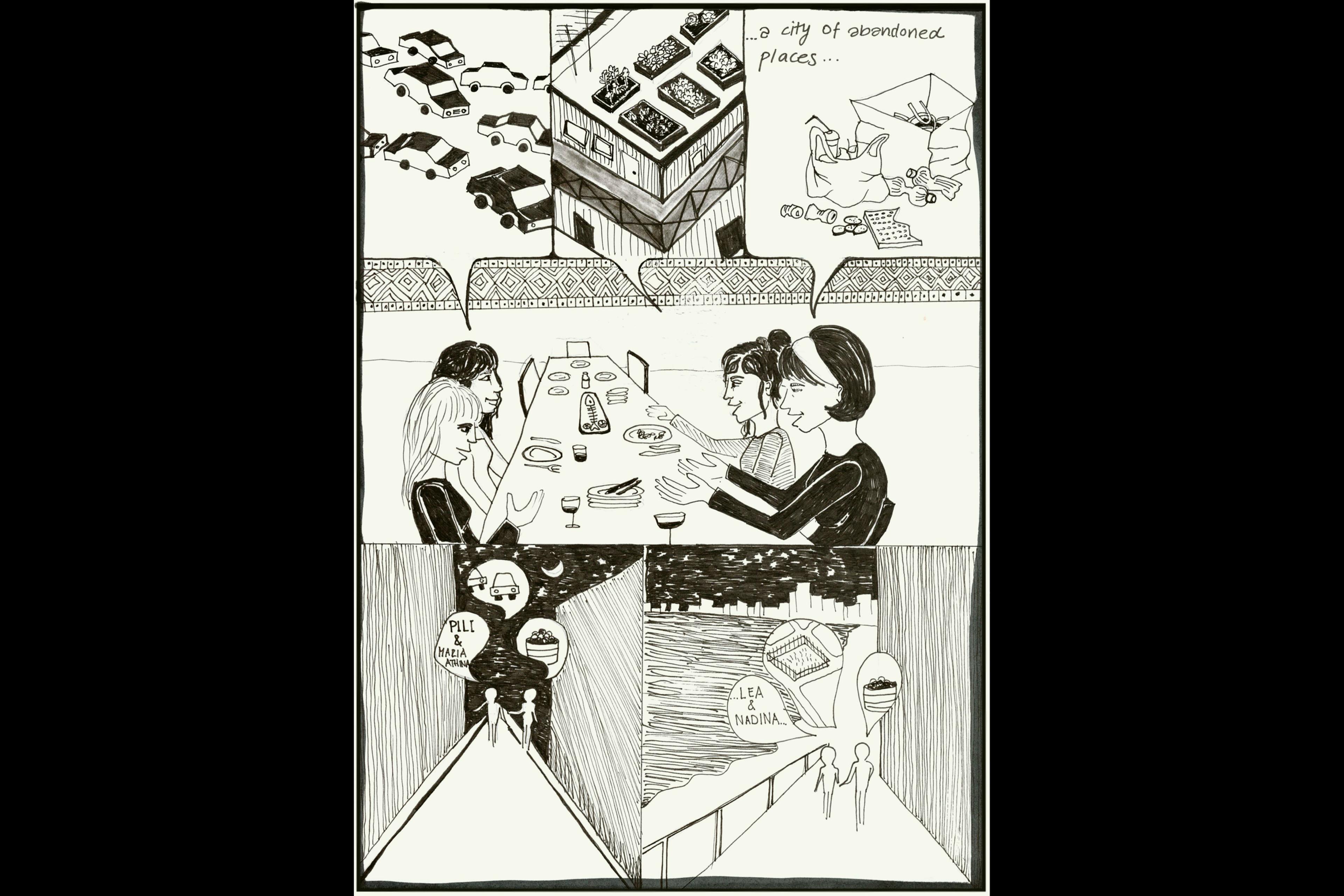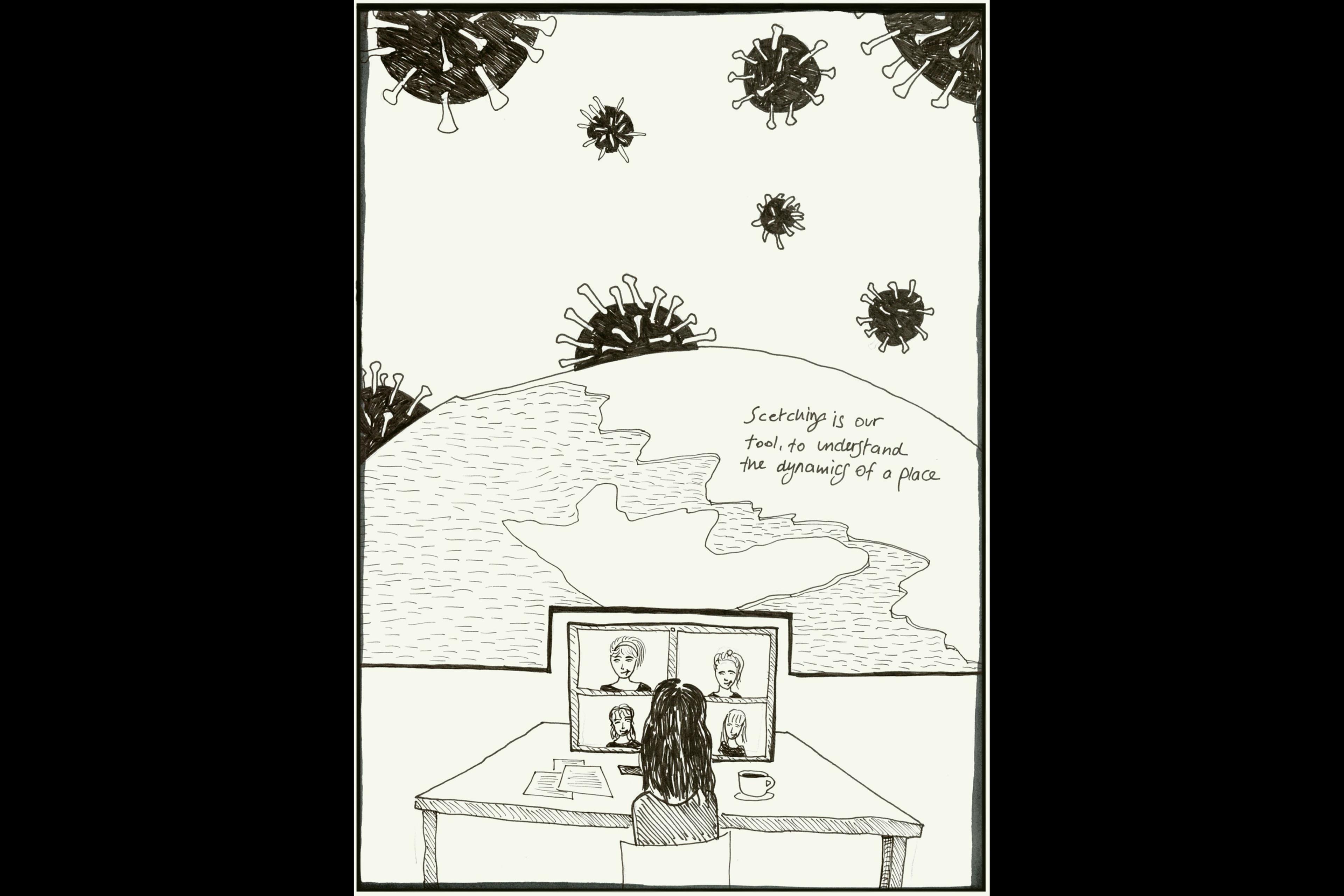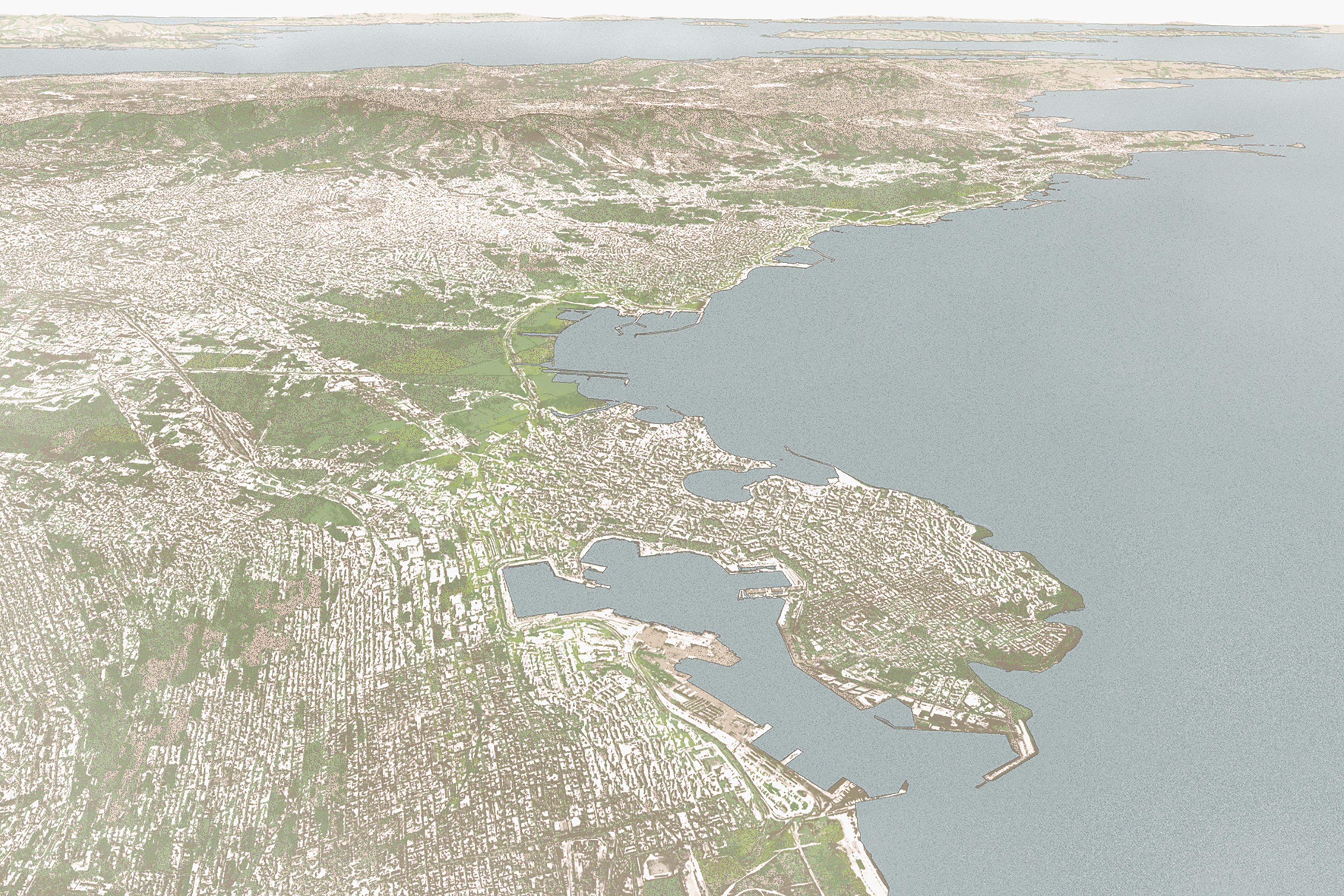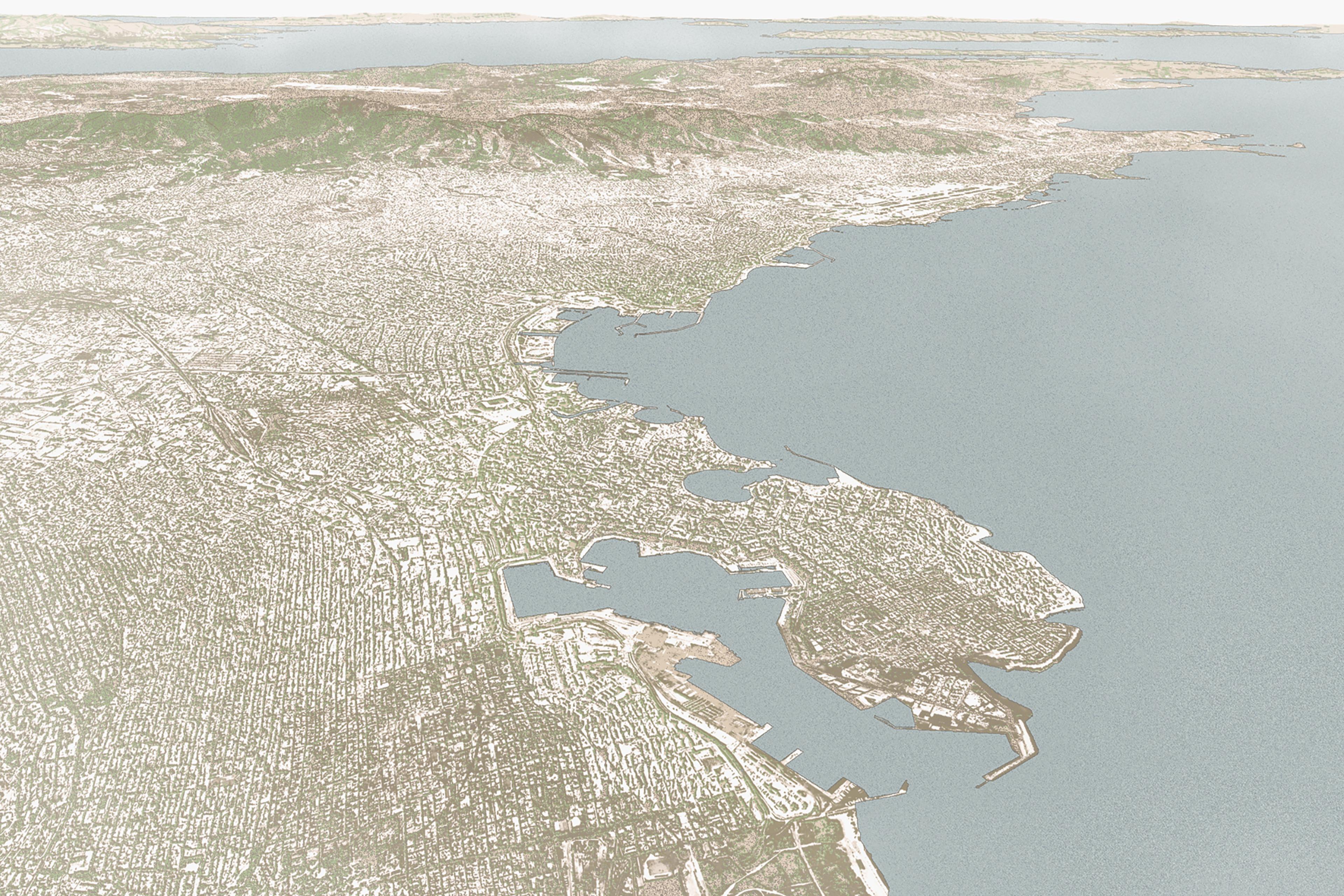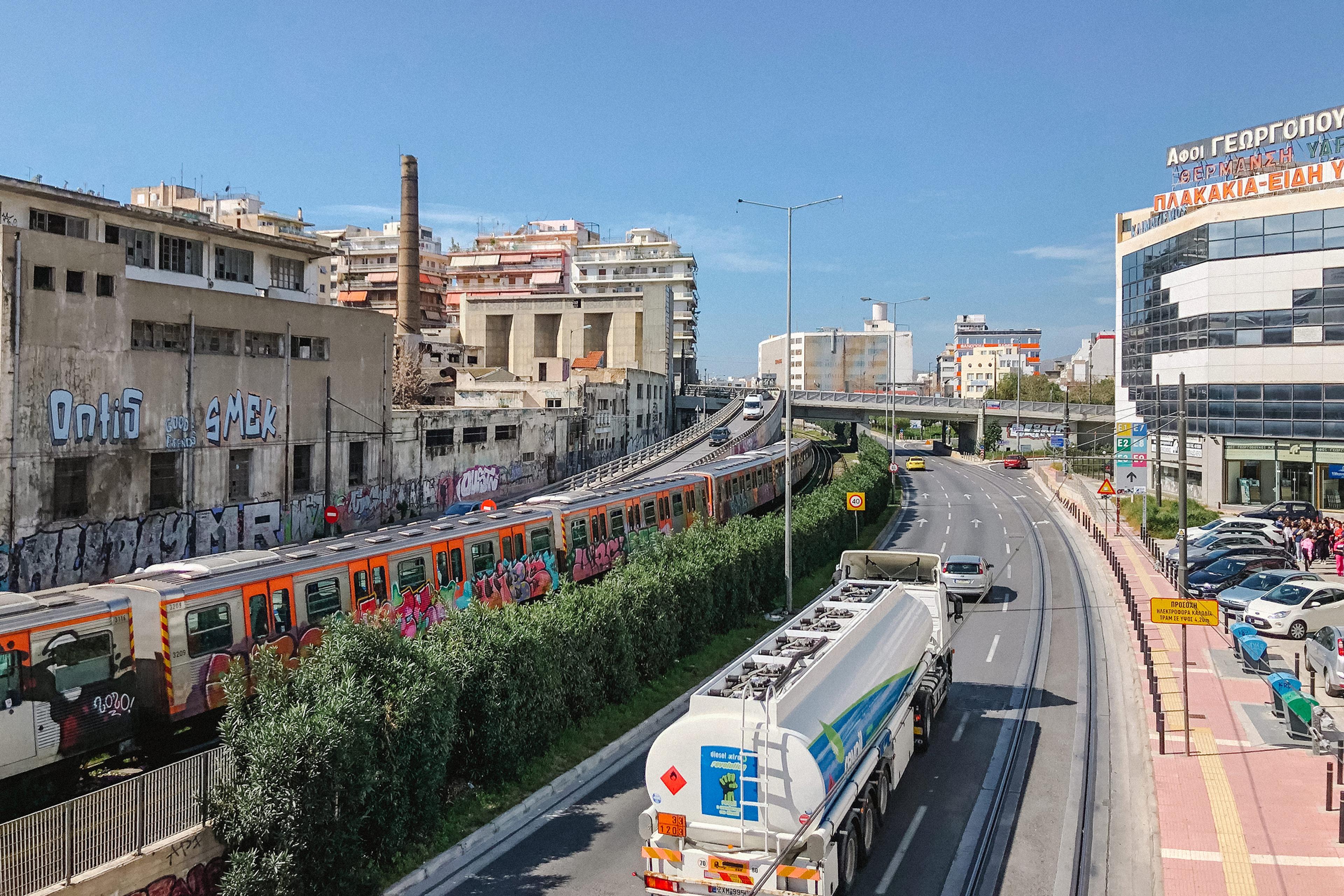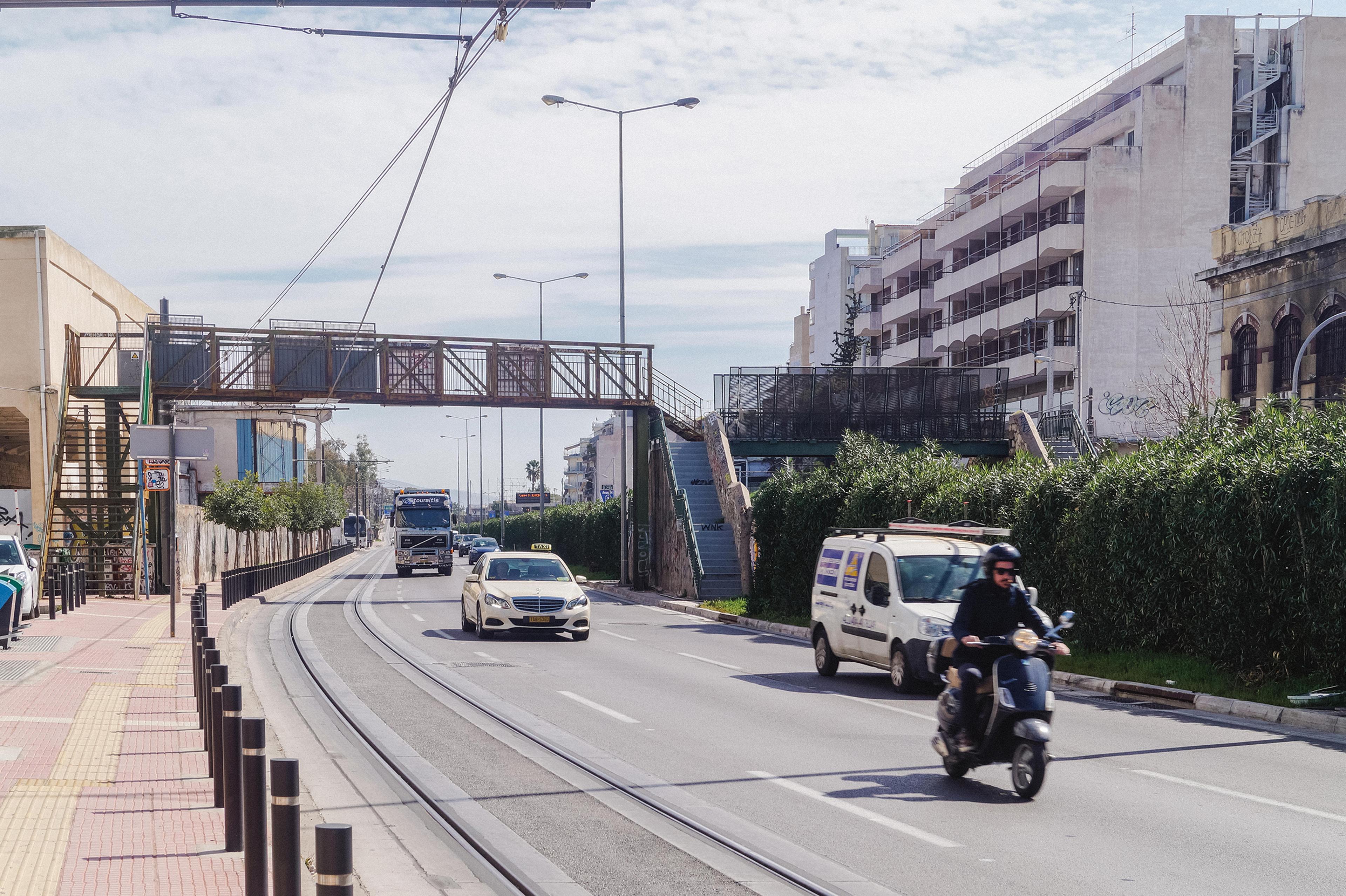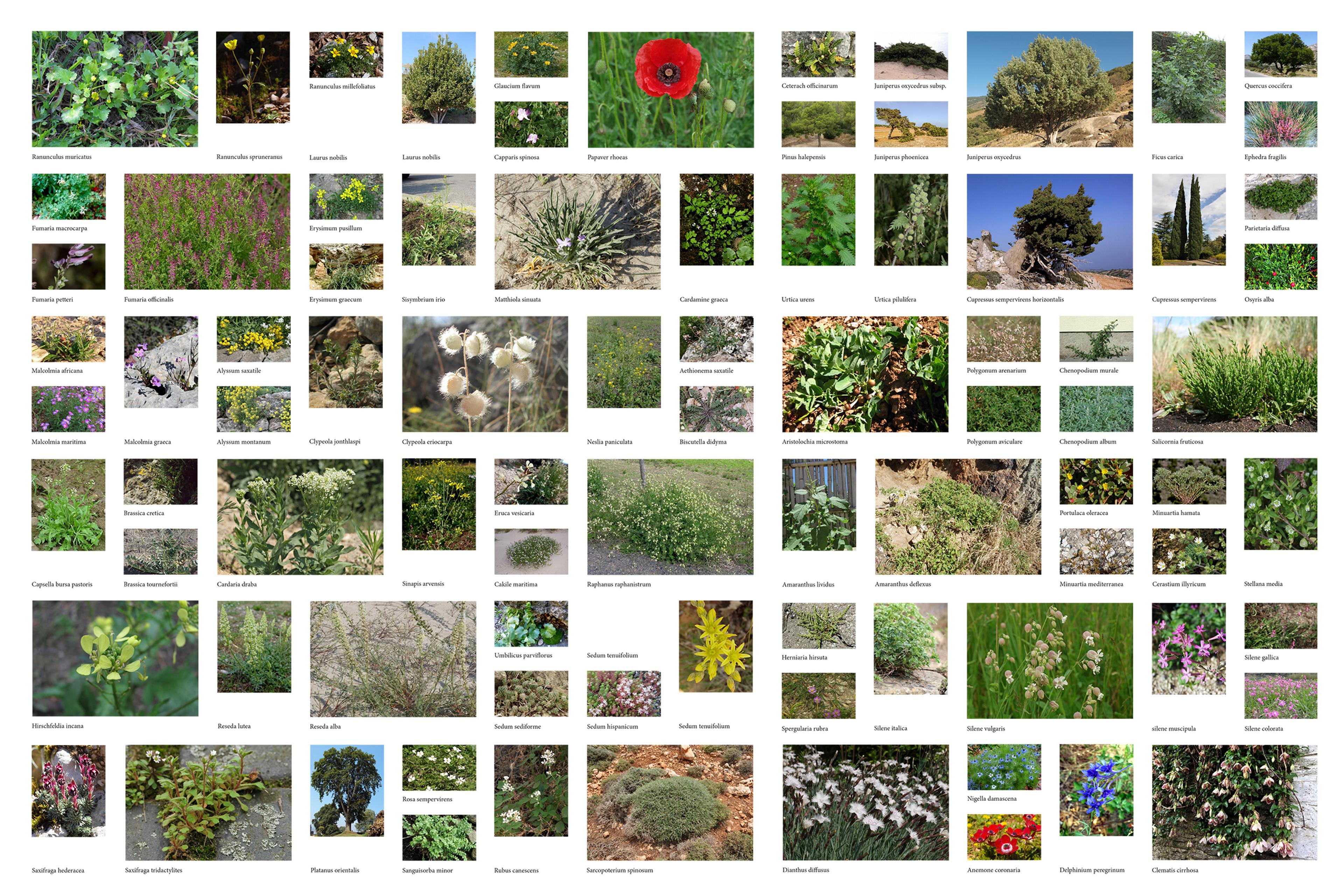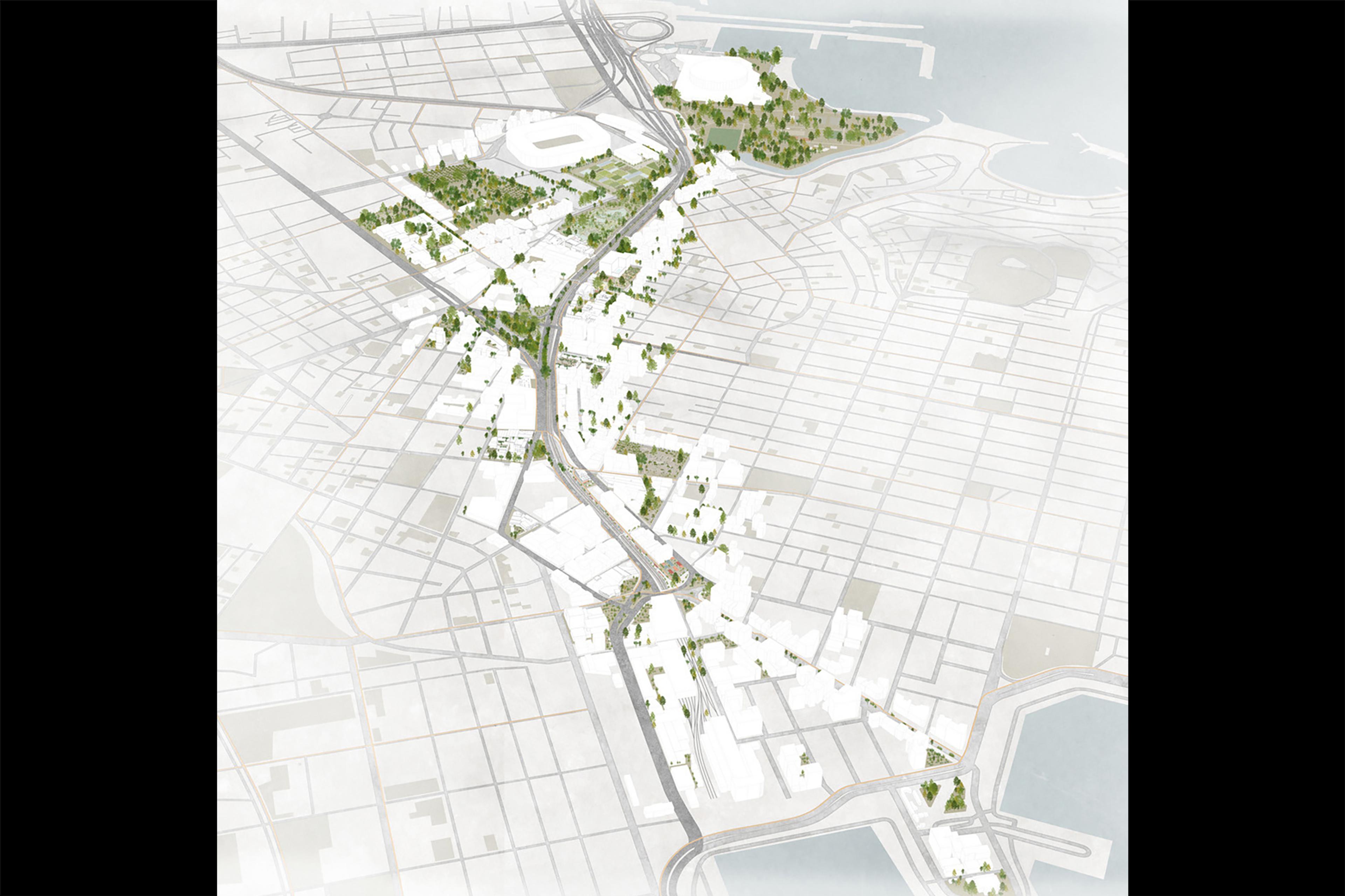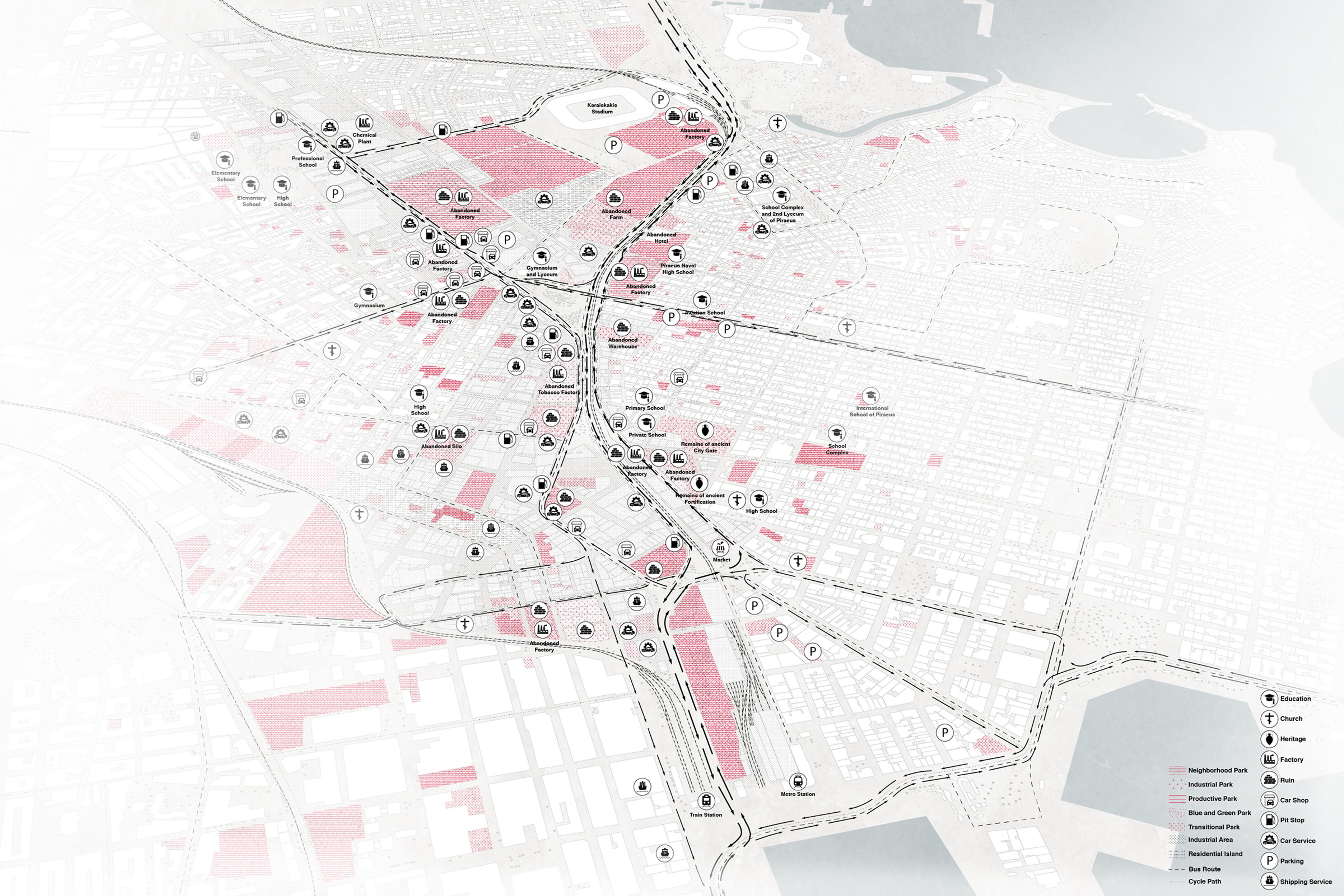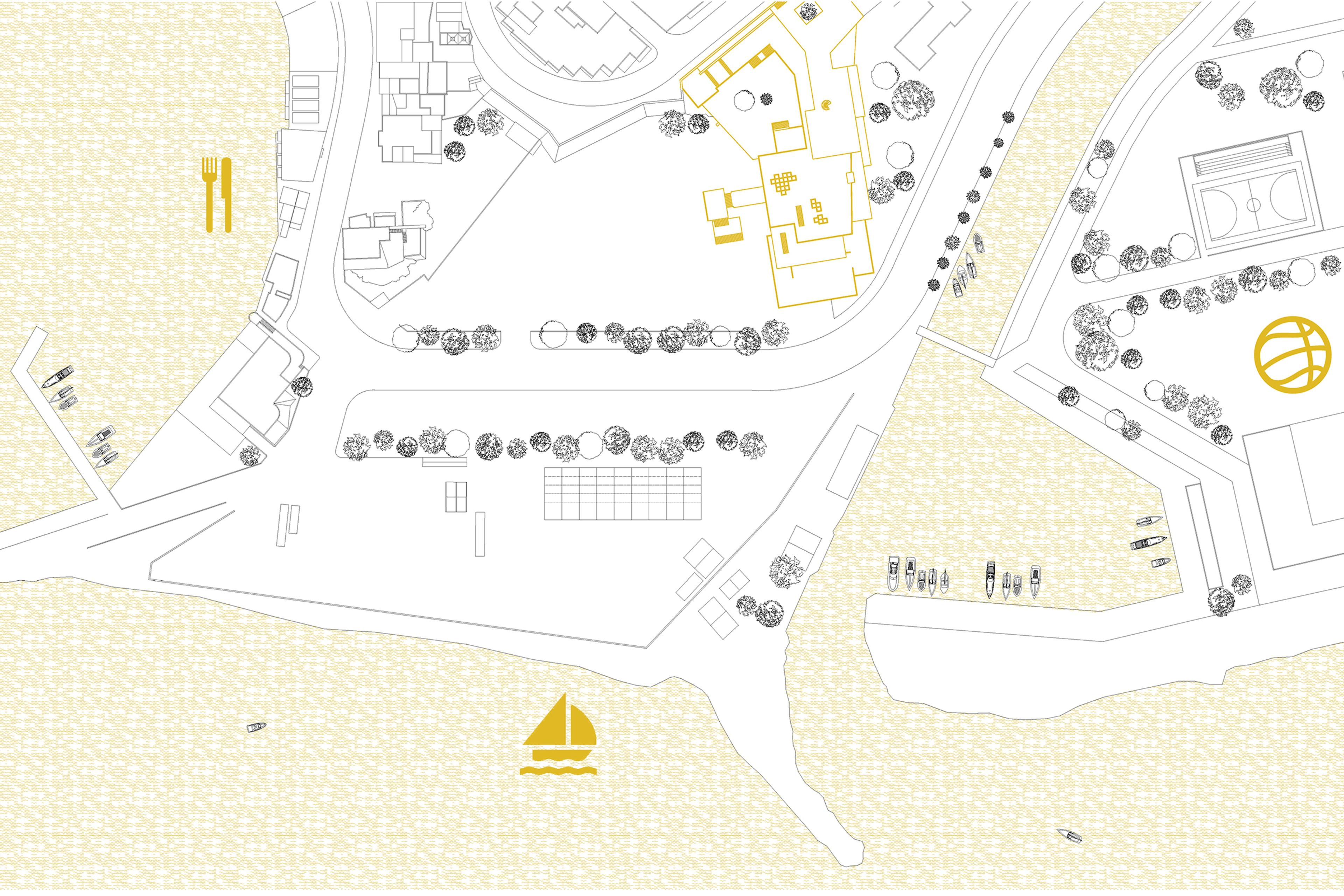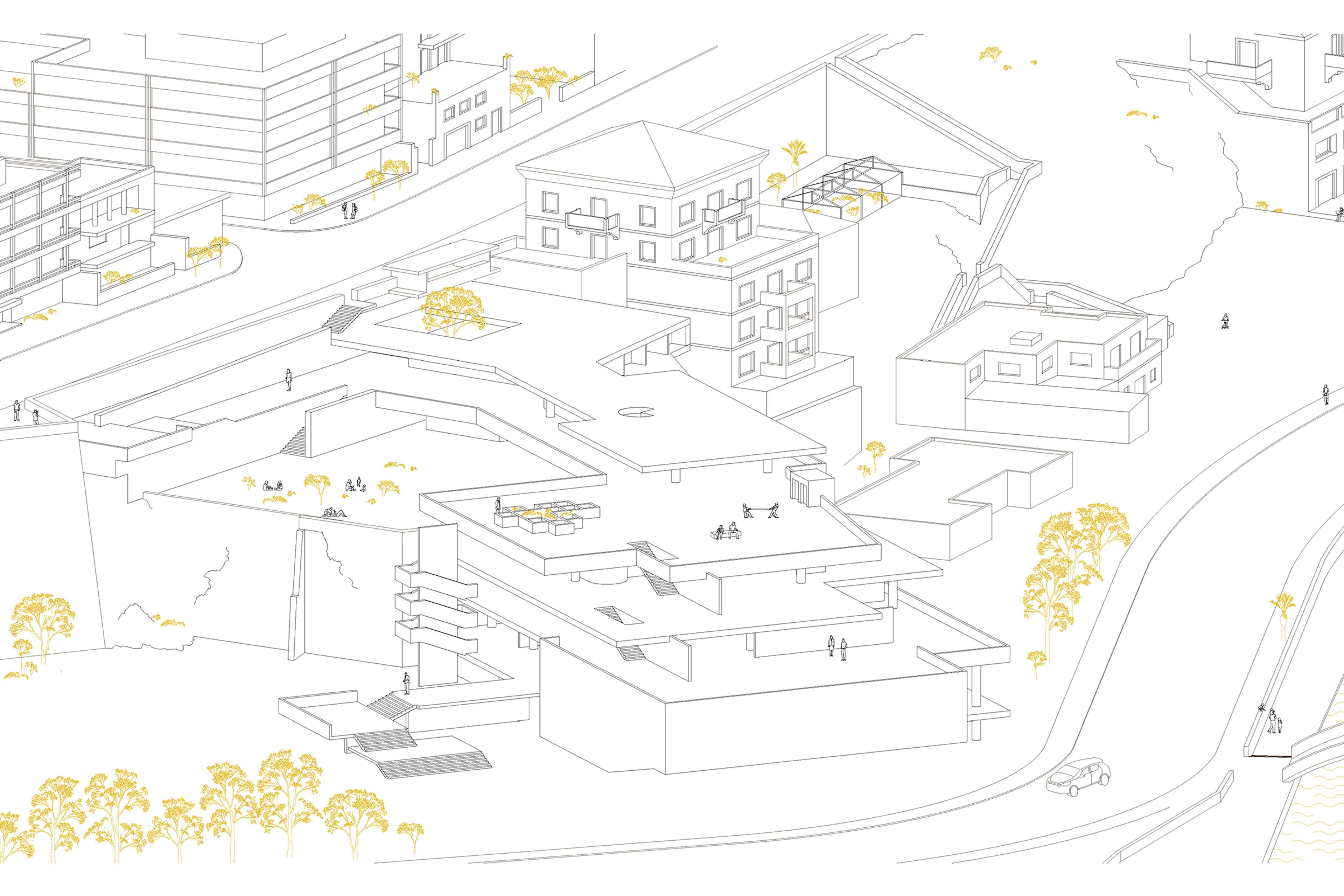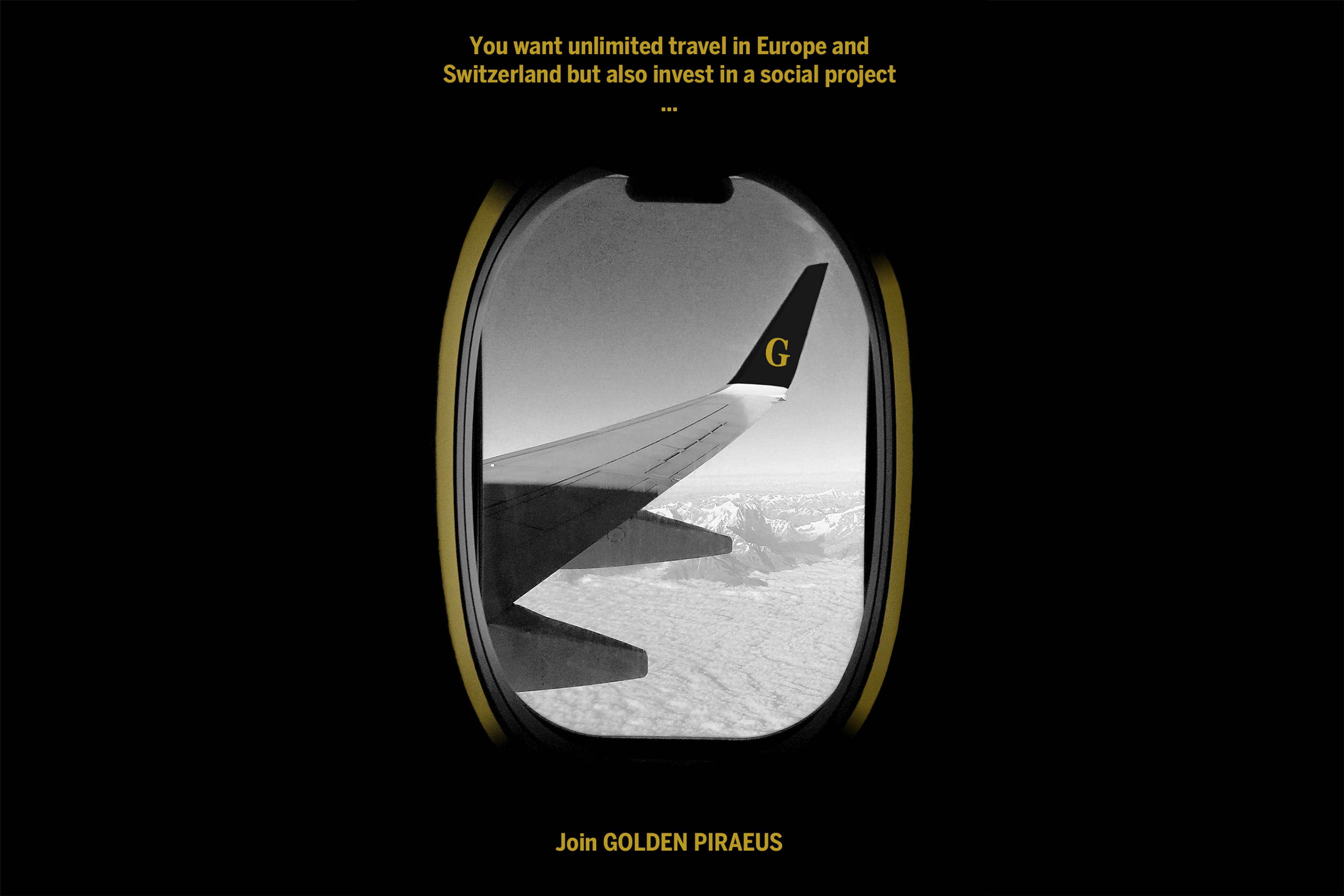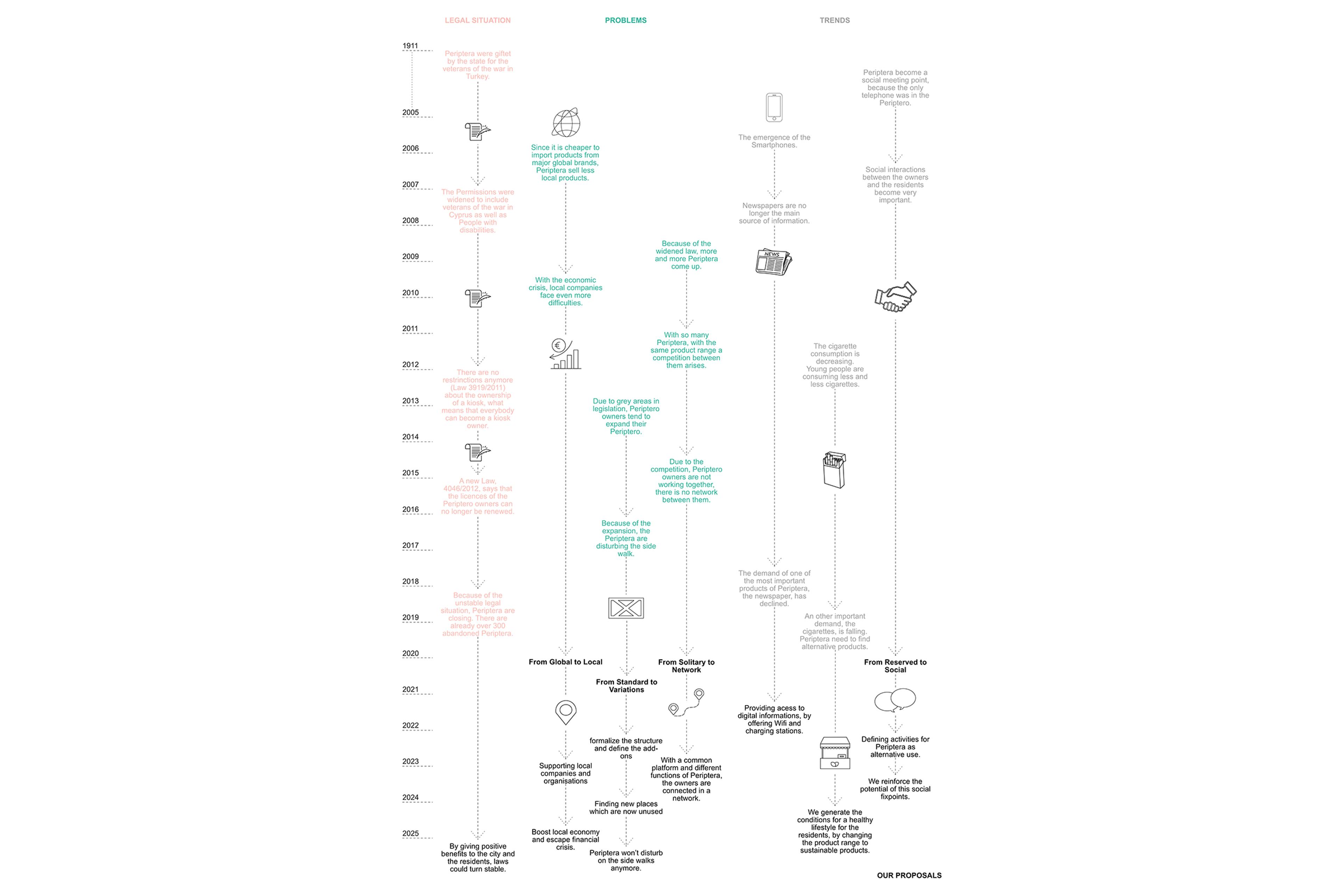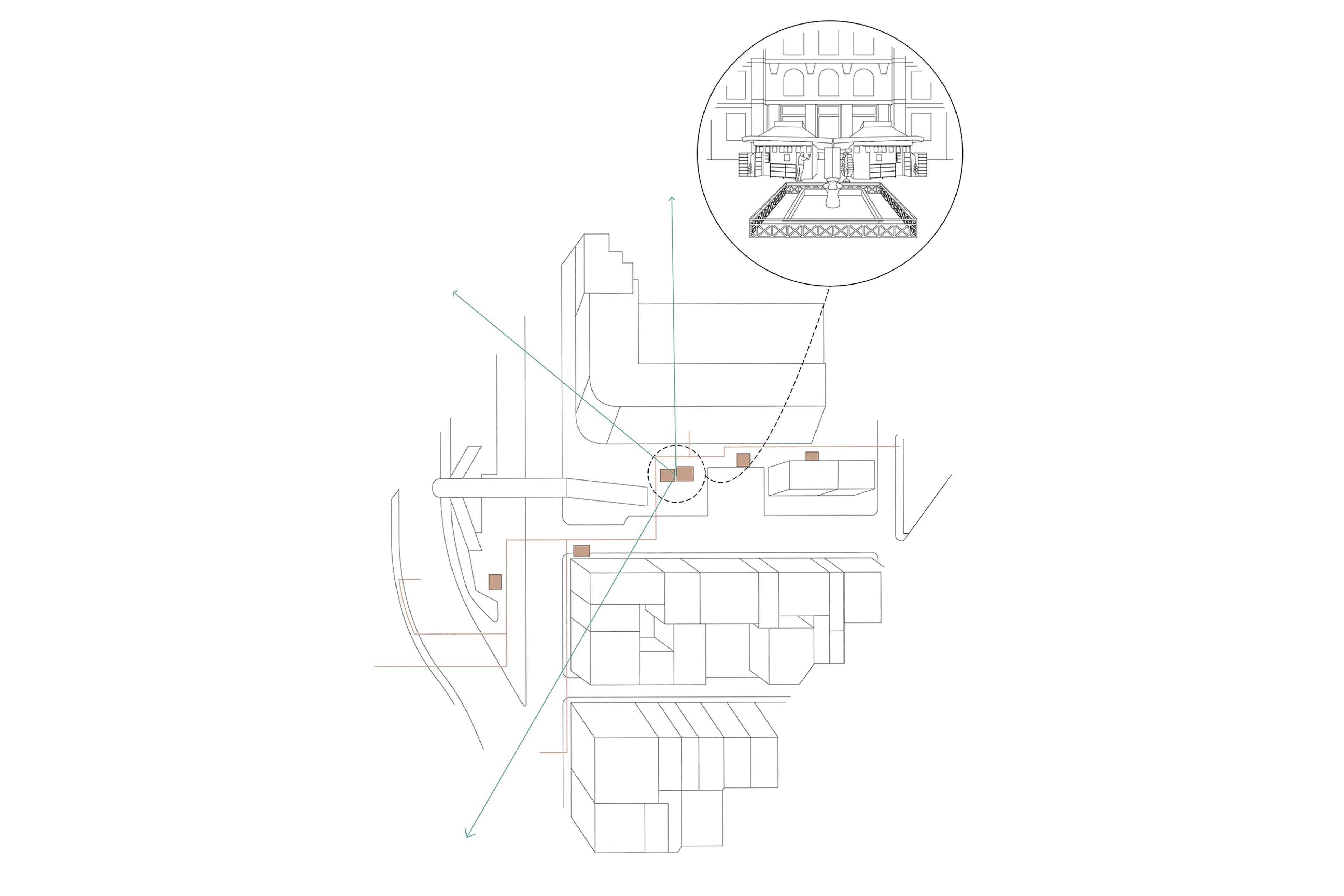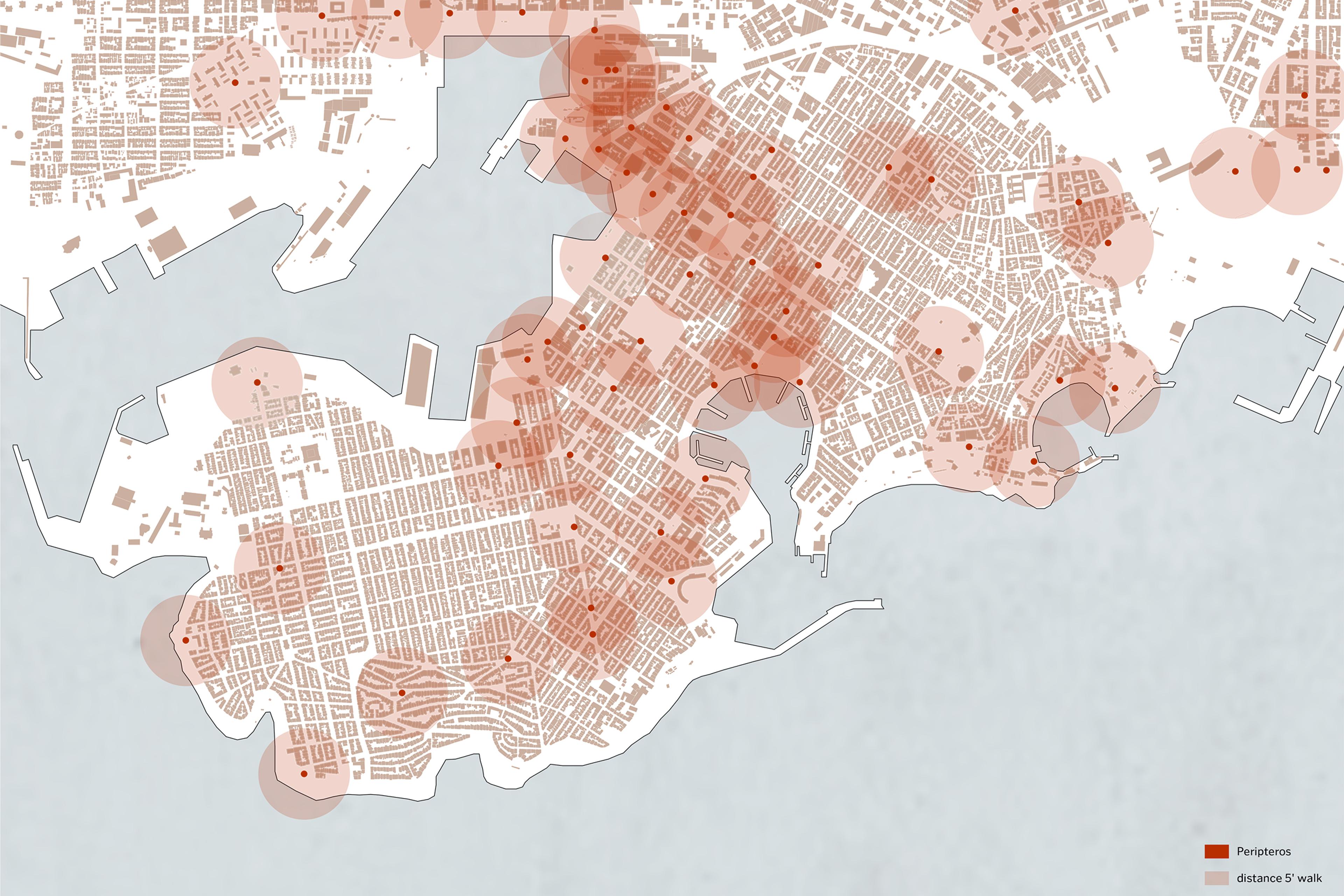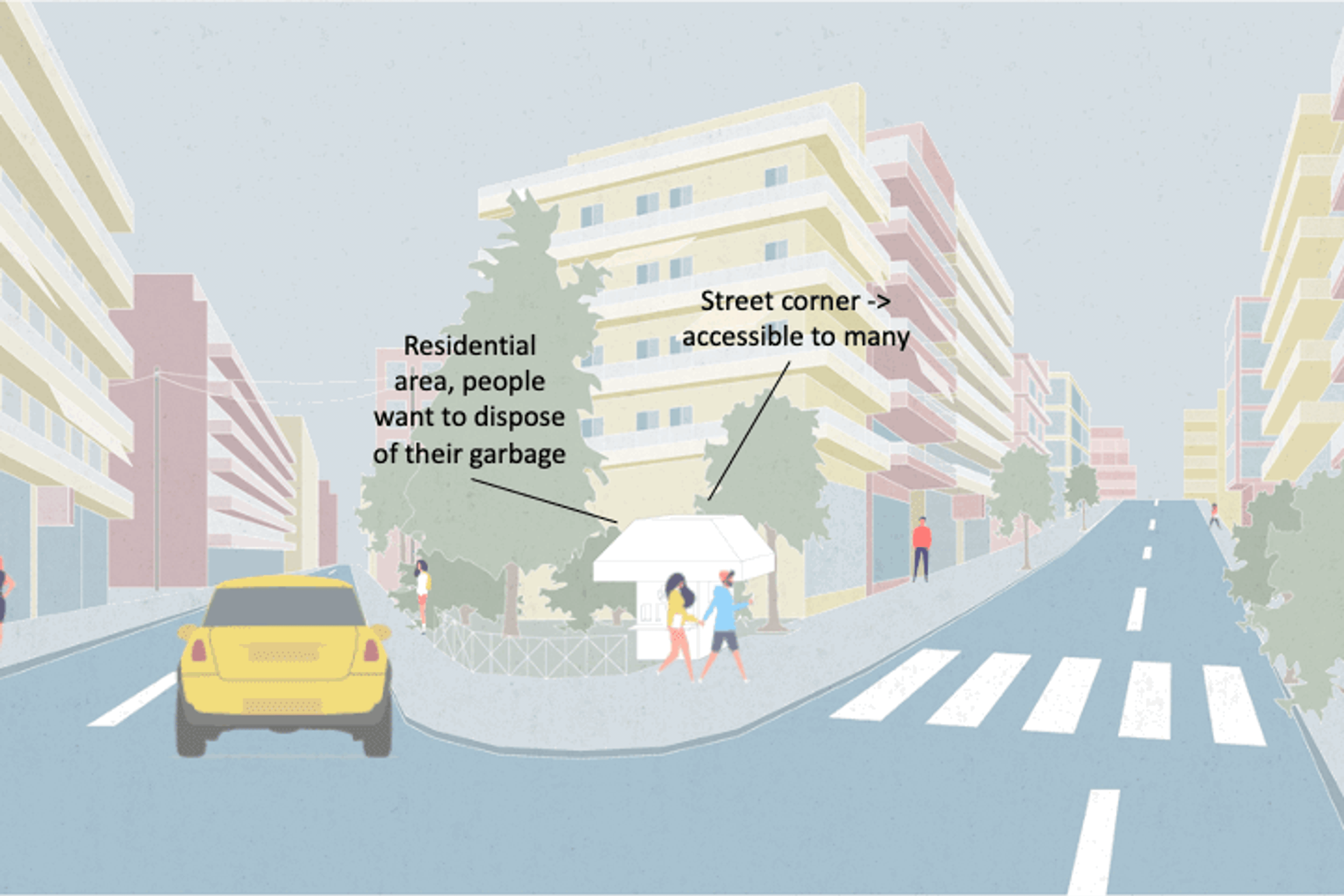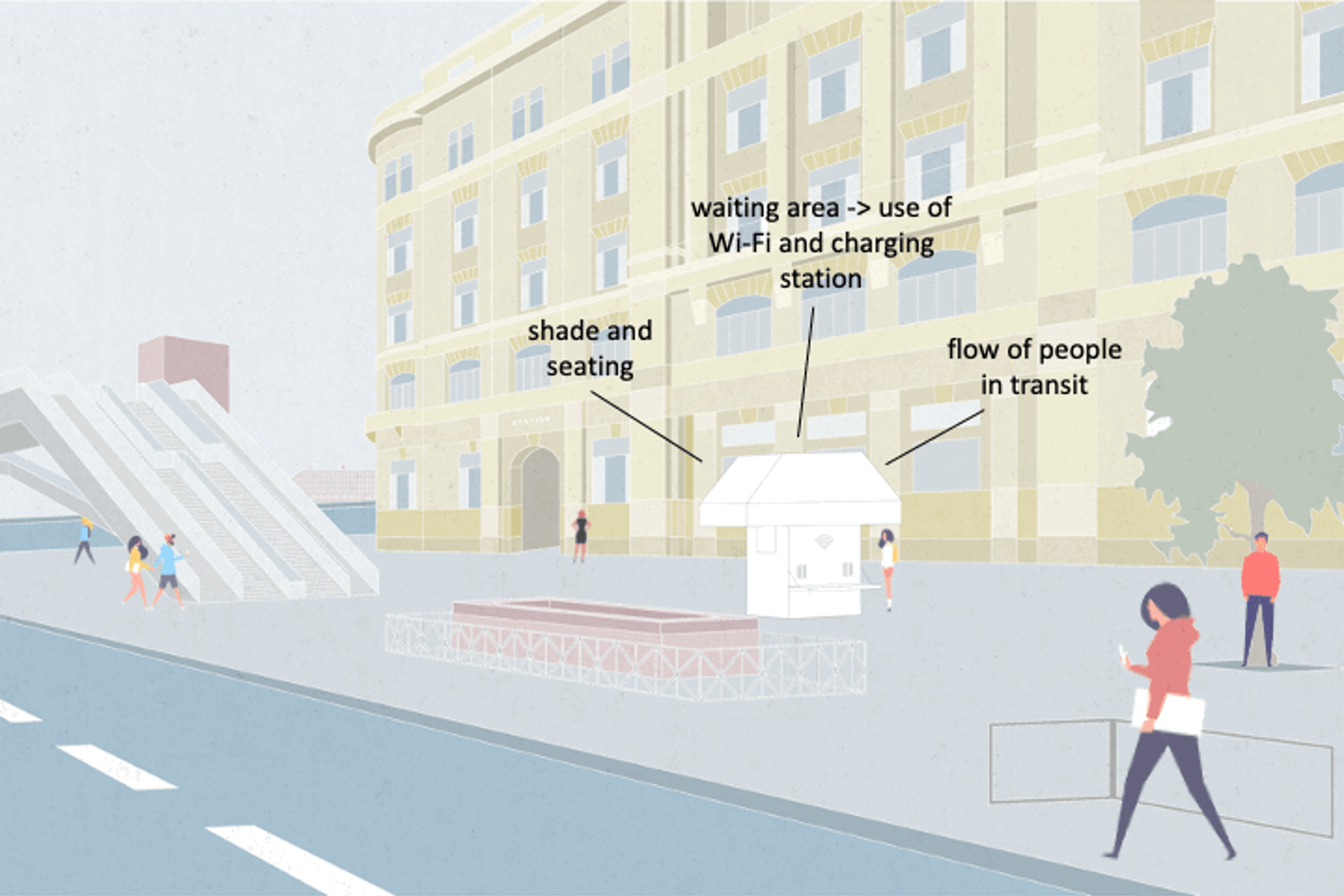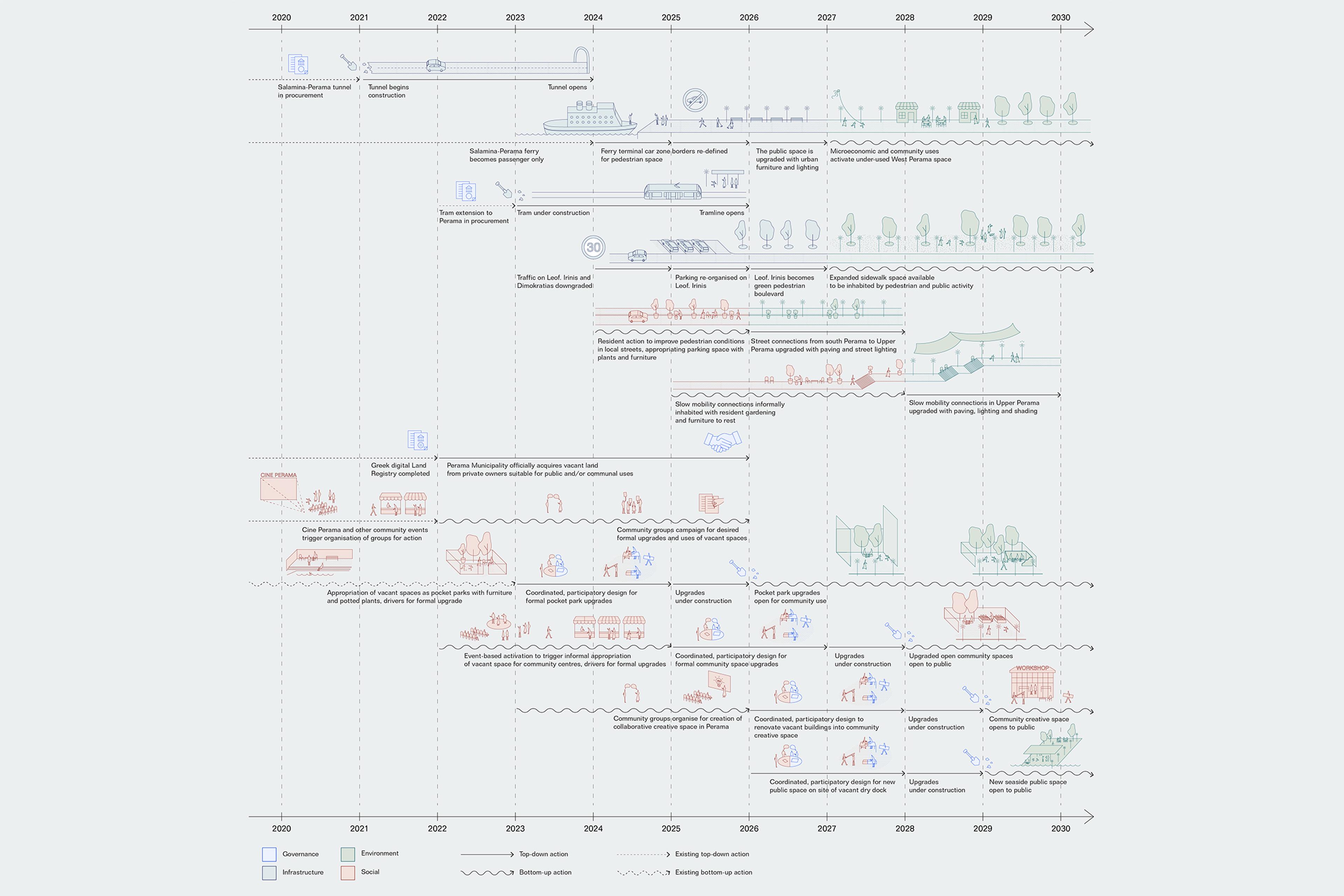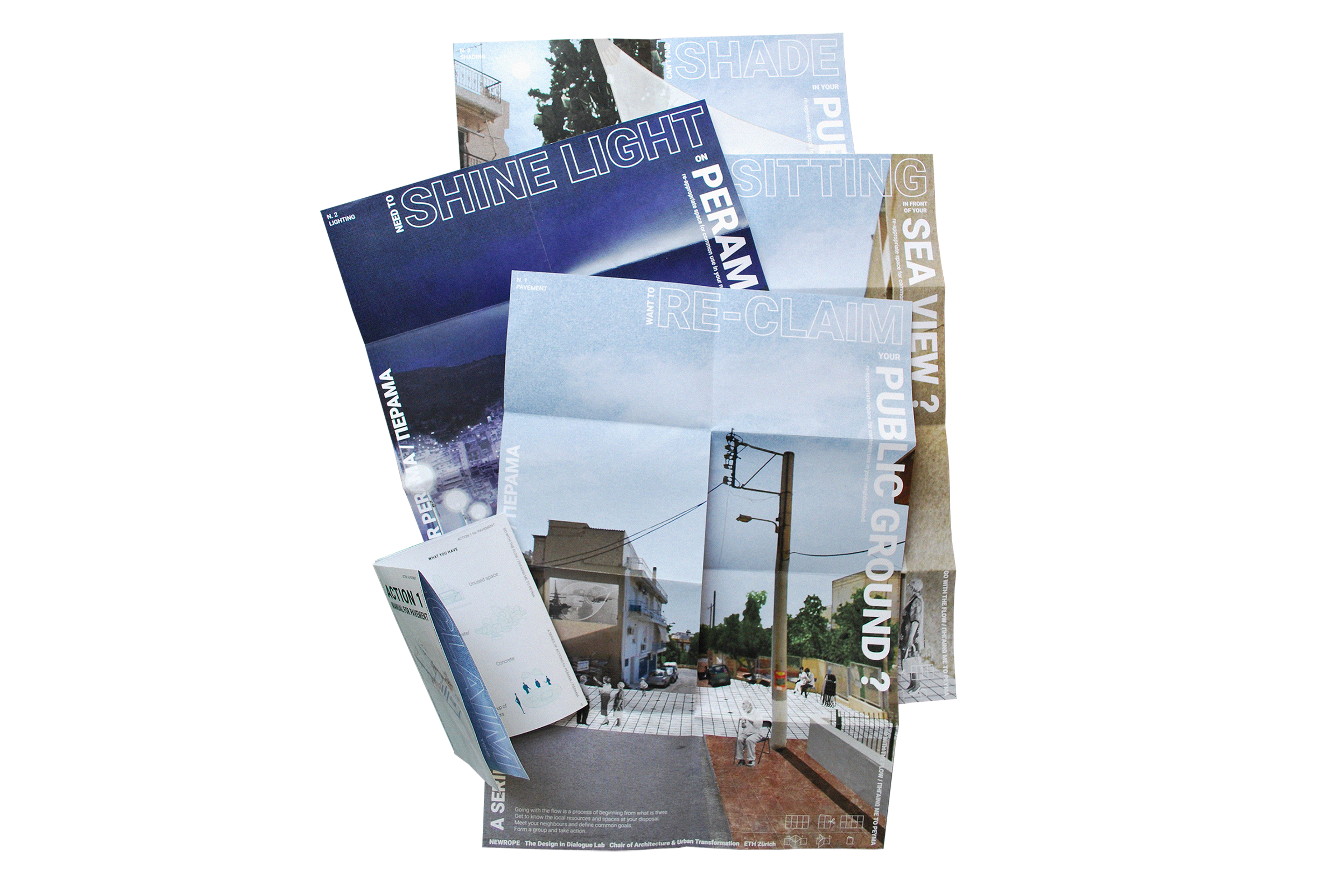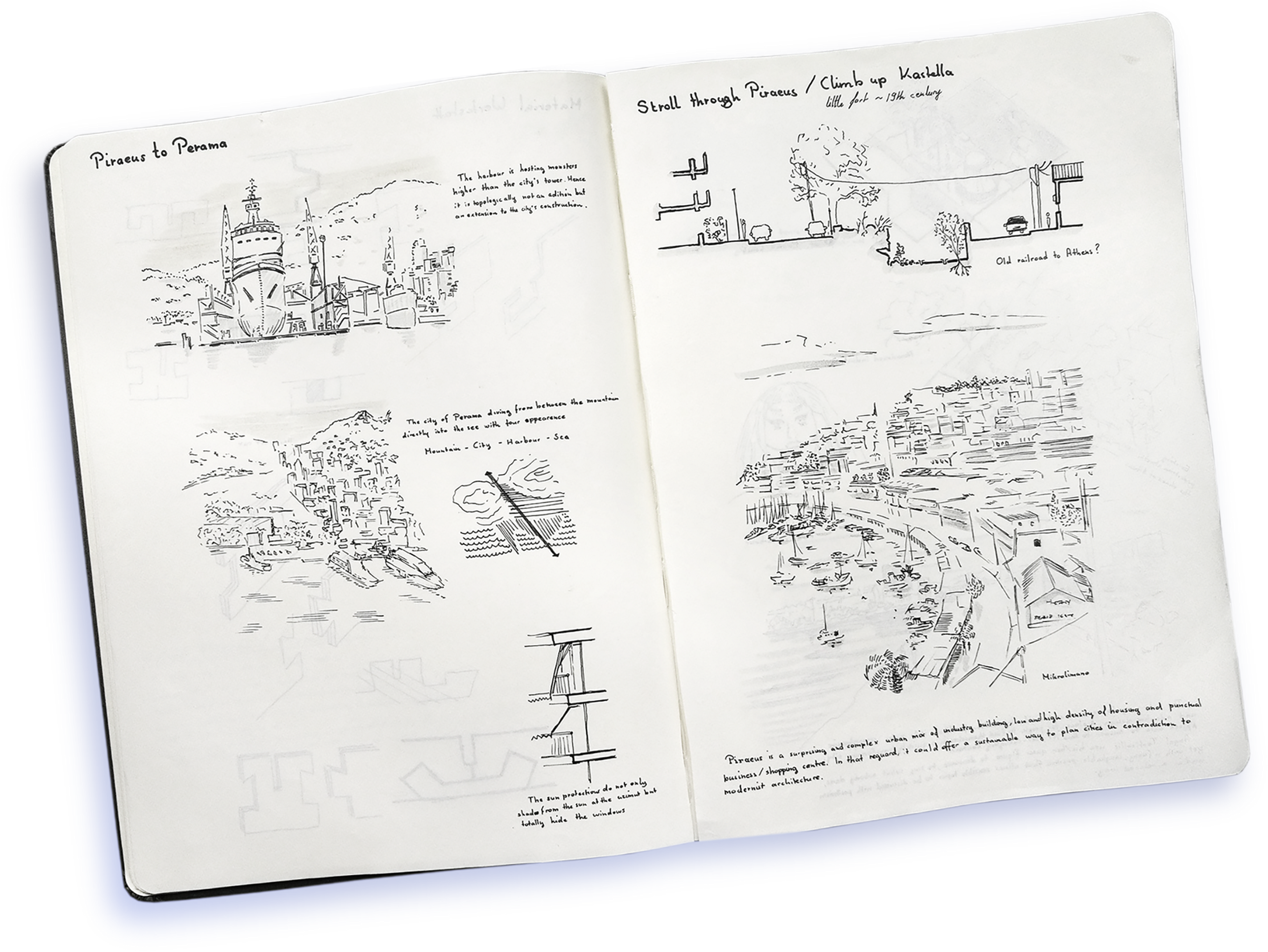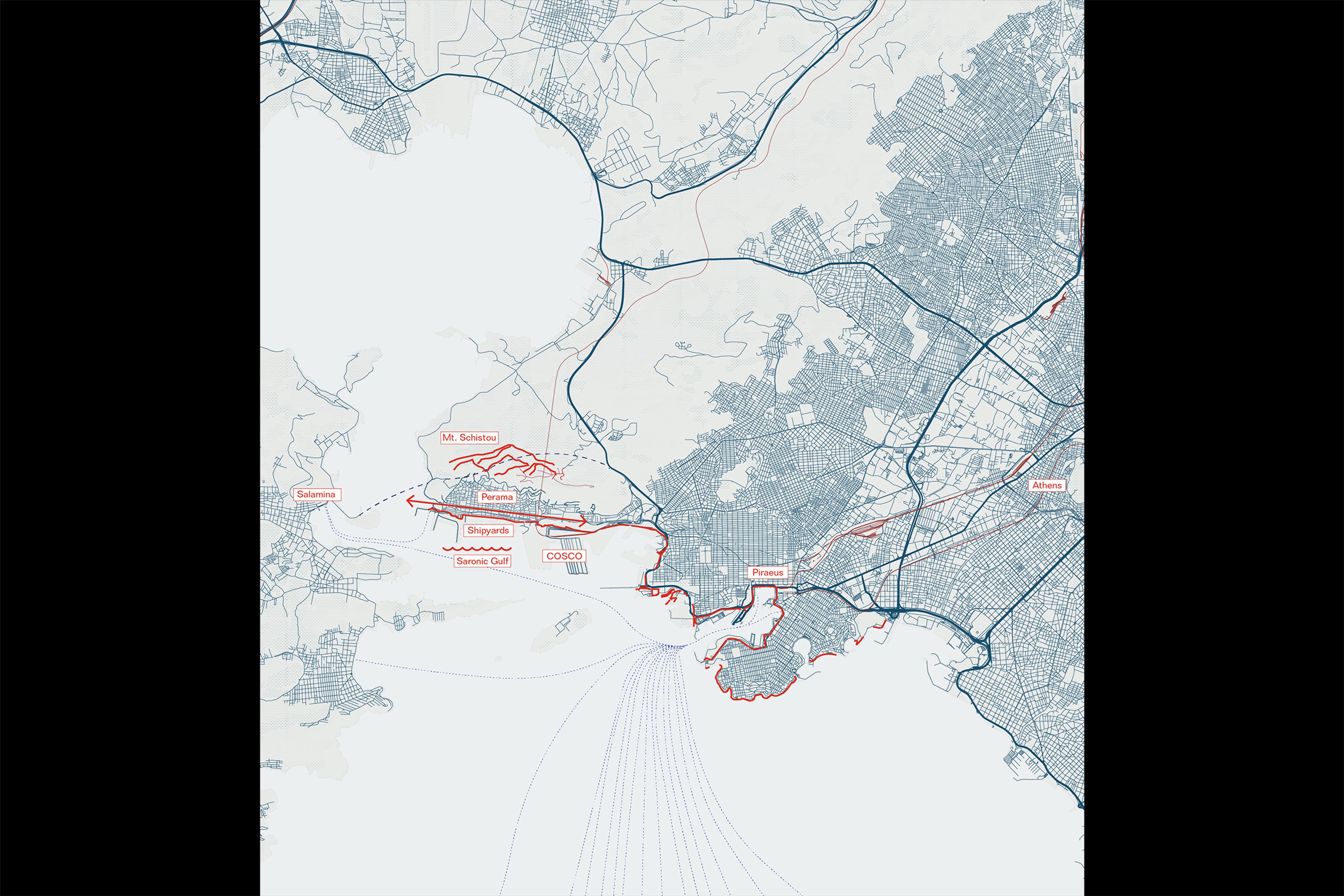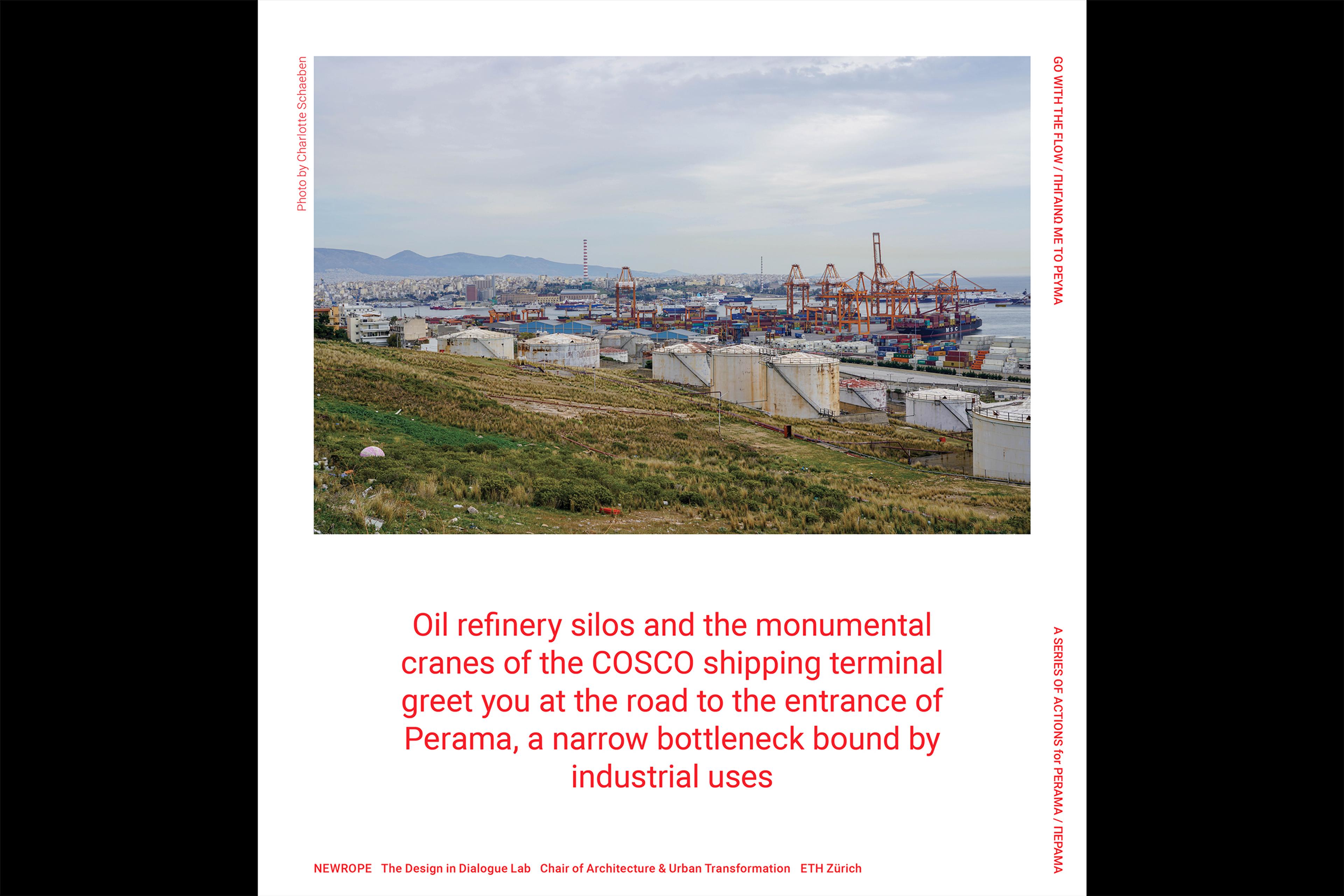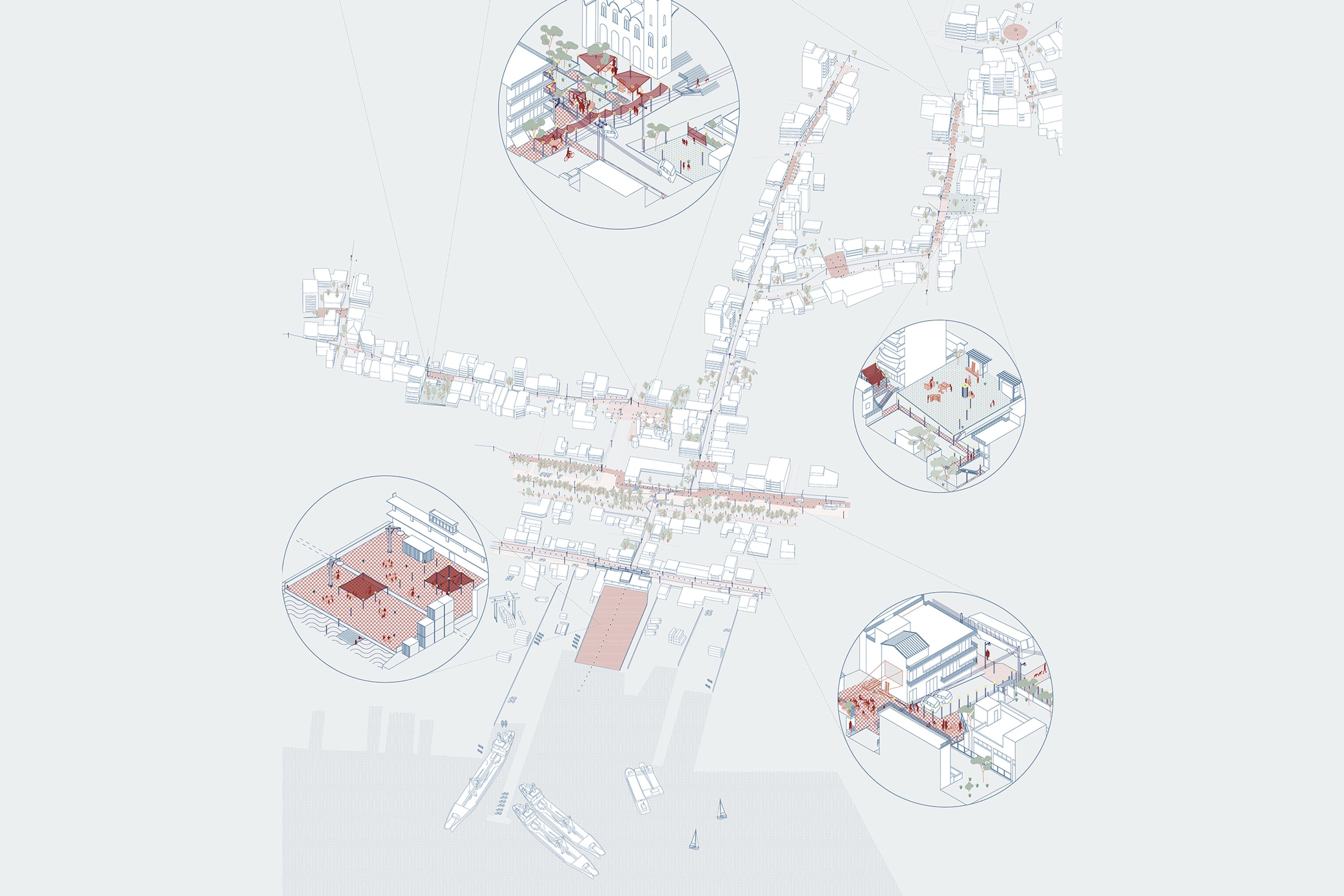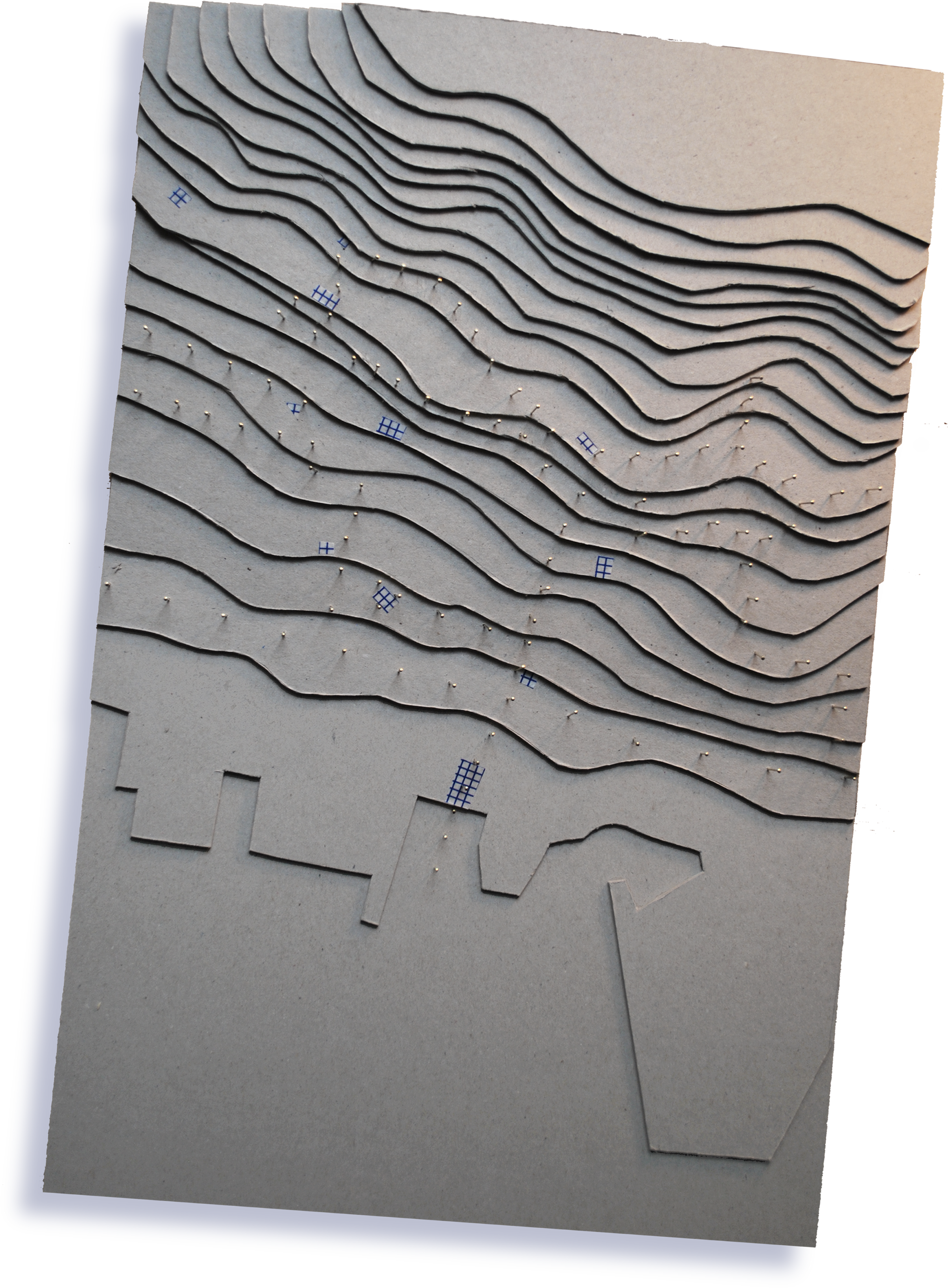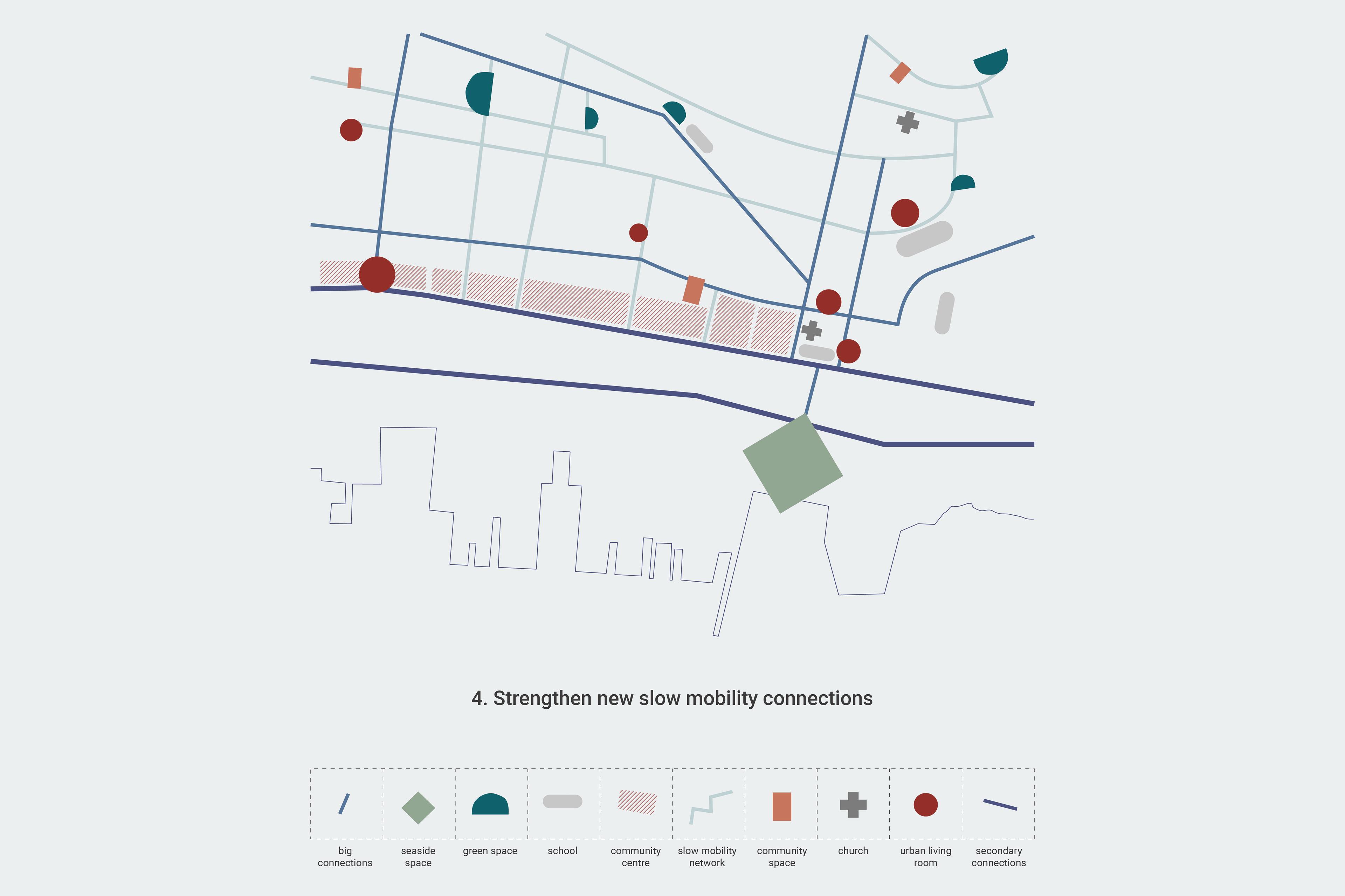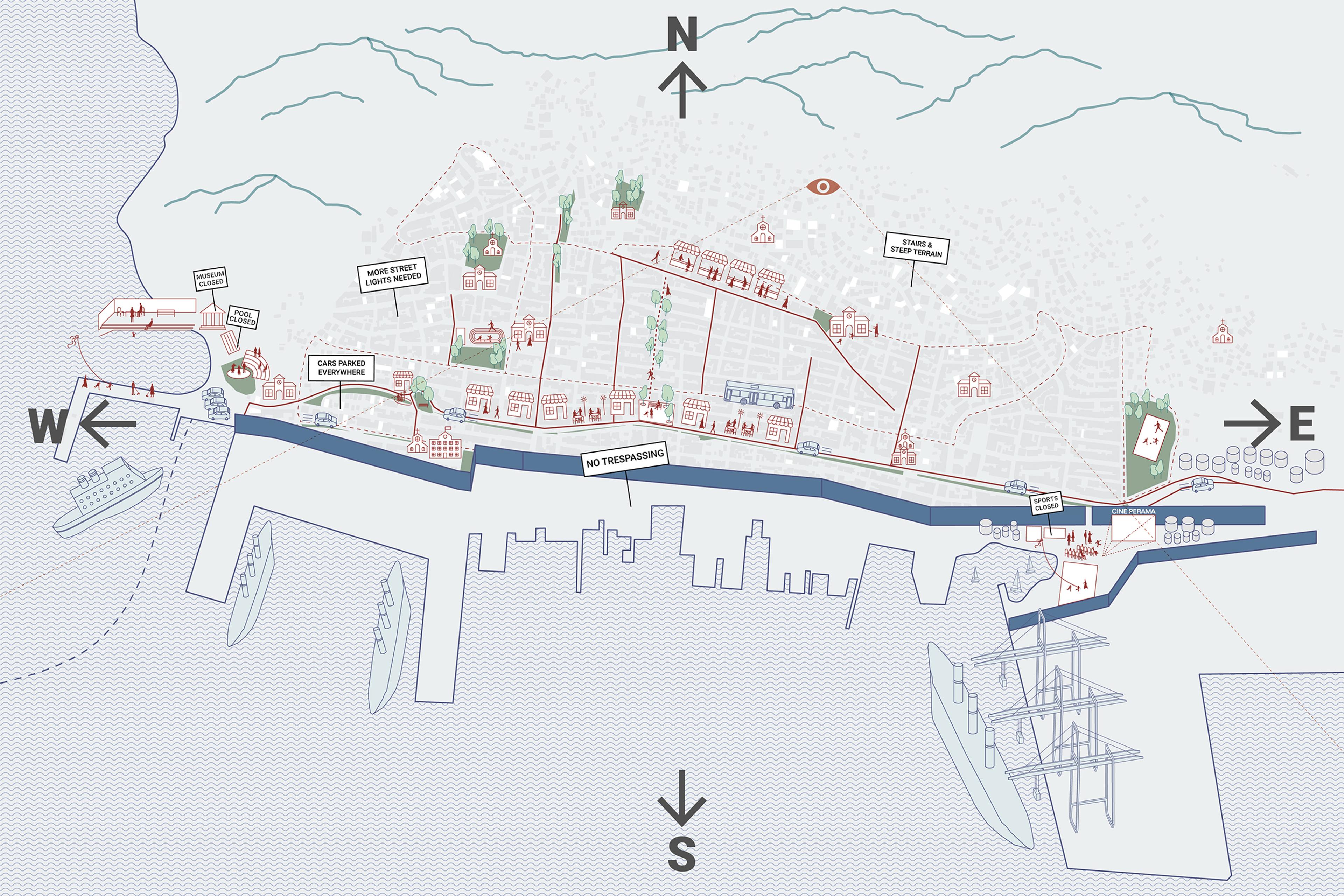Studio Work Piraeus
The Spring 2020 design studio centered around the port of Piraeus and surrounding areas along the Greek coast. Here you can read more about Studio Piraeus. By scrolling down you can explore the projects.
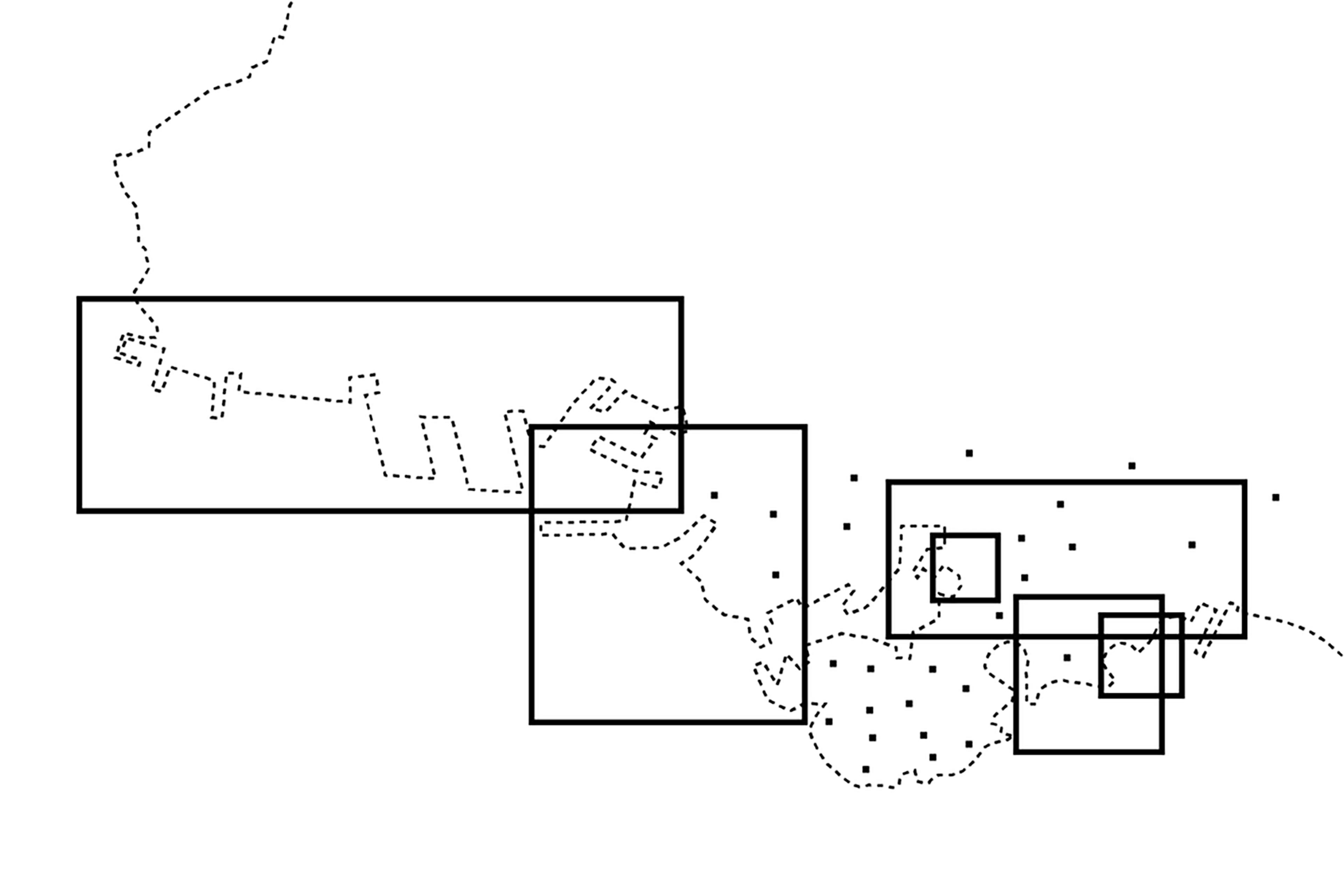
Abstract map of Greek coast from Perama in the West to Athens in the West with the students projects indicated by black outlines.
(Em)powering PiraeusLeon Dähler, Andreas Dietschweiler
Piraeus is a hub of various logistical networks. These networks are operated with oil and its derivatives. The refining of oil is an important factor in the Greek economy and will disappear in the coming decades as a major contributor to climate change.
We are exploring how decentralized networks of hydrogen production could replace the Greek oil industry as the main driving force behind the port of Piraeus and act as a civic infrastructure.
Piraeus - The Green City Lea Andermatt, Nadina Dollie
Our project tells a story about supporting the local grassroot movement in Piraeus. With small interventions we want to transform the urban fabric, in a way, that we find both, more attractive and more productive. The movement is a group of Greek women, all of whom work free of charge to educate children and adults about recycling, the value of composting and ways to grow one’s own food. This should help to reduce the litter problem around Piraeus and create a more independent city overall. (Instagram/Blog)
Piraeus Unsealed Leon Beck, Nicolas Rolle, Ekaterina Scholz
Our project aims to bring something back that seemed to be extinct from the urban area in Piraeus for a long time: biodiversity. The grey corridor creates the conditions for what we envisage as a green urban valley for the city, serving the needs of its citizens. Furthermore, a cooperative garden patchwork brings diversity back into the dense fabric and addresses the environmental problems of today's city. The gardens become a collection of micro-environments on abandoned land and near abandoned industries where plants are already taking root.
Rethinking Temporary HousingMaurizio Mätzler, German Kiyyan, Angela Roth
With our project we emphasize the potential of the tower of Piraeus, which as a hybrid structure combines temporary living, office, cooperation and studio spaces with public uses such as parks, schools, cinemas, galleries, bars and clubs. The uses are distributed throughout the building in such a way as to promote social interaction among both, the various user groups and with the citizens of Piraeus.At the same time, the façade serves as an advertising and media infrastructure for the city and its citizens.
Golden PiraeusTobias Etter, Timothy Schärer
“Golden Piraeus” is a fictional project that adjusts the process for foreign investors applying for a Golden Visa, an investment-linked residence permit of the EU. Sellers of real estate pay a 2% tax, going to the “Golden Piraeus Fund”, which is to rebuild and operate the unfinished cultural centre dating from 1972 on the coastline of Faliro Bay in Piraeus. This is just one possibility among many to think about how large investment can benefit the local society and urban development, about which it is difficult for us to have a clear opinion ourselves. Our project revolves around questions about Piraeus, Europe, culture, investment, money and - perhaps most importantly - value.
The Future PeripteroSogol Amuzegar, Sina Lengerer, Emily Tobler
The Periptero of today is a traditional greek kiosk where you can find commercial products from all over the world. As all Periptera are selling the same goods of declining demand, there is a high rivalry and a missing link to the specific urban and social context they're in. This is neither beneficial for the local economy, nor for the local producers or the local people. By changing the product range to local goods, adding social activities and generating a network for the Periptero owners, we can keep the tradition of the Periptera alive, by making them resilient, complementary and an important social and urban (infra)structure of the city. In our proposal we provide an online platform to strengthen relations between Periptero owners, residents and users. Furthermore, through “Adopt A Periptero”, we involve various participants to find examples of feasible future Periptera.
Go with the FlowClara Peter, Théophile Ray, Janelle Woo
Going with the flow is a process of beginning from what is there. In Perama, what is there is a difficult and paradoxical complexity – of an area bordered and contained topographically and industrially, yet bisected by vehicular passage (“perasma”) to neighbouring Salamina. It is an area with a vivid history of arts and culture, and a strong sense of community, yet lacking access to space in which to gather and express this culture, of an area identifying with the sea it views from the top of the hill, yet lacking direct and equal access to the waters in which their ancestors used to swim.The socio-cultural and economic changes that define the current urban environment lead to new challenges, but also to new possibilities. By projecting a parallel series of actions stemming from ongoing top-down infrastructural developments and informal appropriation by residents lacking access to public space, it is possible to formulate a different approach to the role of the architect in driving change. We formulate our project as a hybrid catalyst ideal, seeking to facilitate collaboration across the network of actors and to provoke the urban imagination of Perama’s citizens with a series of manuals. Many small actions make it possible to create larger change, to reactivate the people’s relationship to the sea, to re-imagine space for social inclusion and communal interaction, and to interrogate the borders that characterise these relations.
Final presentation
During the final Design in Dialogue session of Studio Piraeus, this online event turned into a parade of projects: To overcome the two-dimensionality and rigid frame of digital communication platforms such as Zoom and Skype, students were asked to project their proposals for Piraeus onto their own surroundings: from a student dorm in Zürich to a military service camp in Geneva and the dark streets of nocturnal Sydney, the hometown of one of the students. While some where using their garden to talk about ecological issues, others filmed their neighbourhood to show forms of spatial and social co-existence or reflect on the impact of foreign investments on the housing market. This session transformed us all, internally and externally. It was accompanied by Angel, who joined us from Athens and in the course of the presentation, transformed into Kangela, and back to Angel again. This real-time metamorphosis served as a powerful metaphor for the transformative experience of the students and for Piraeus' ever-changing nature.
You can also visit the Studio Piraeus blog to read more about the studio and the project
